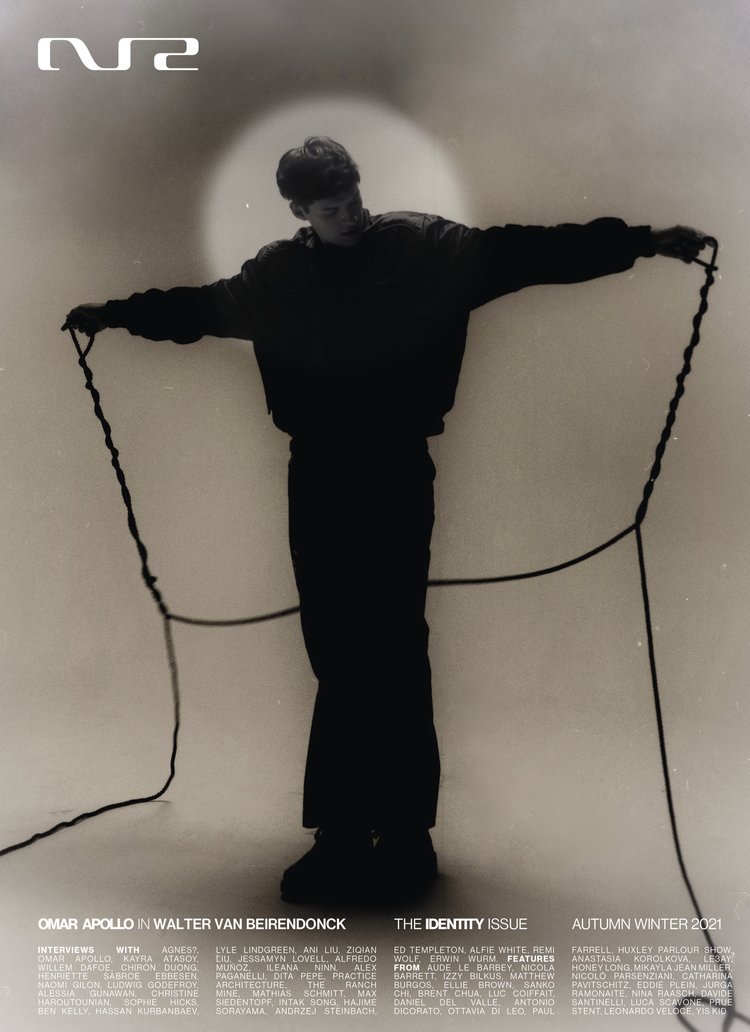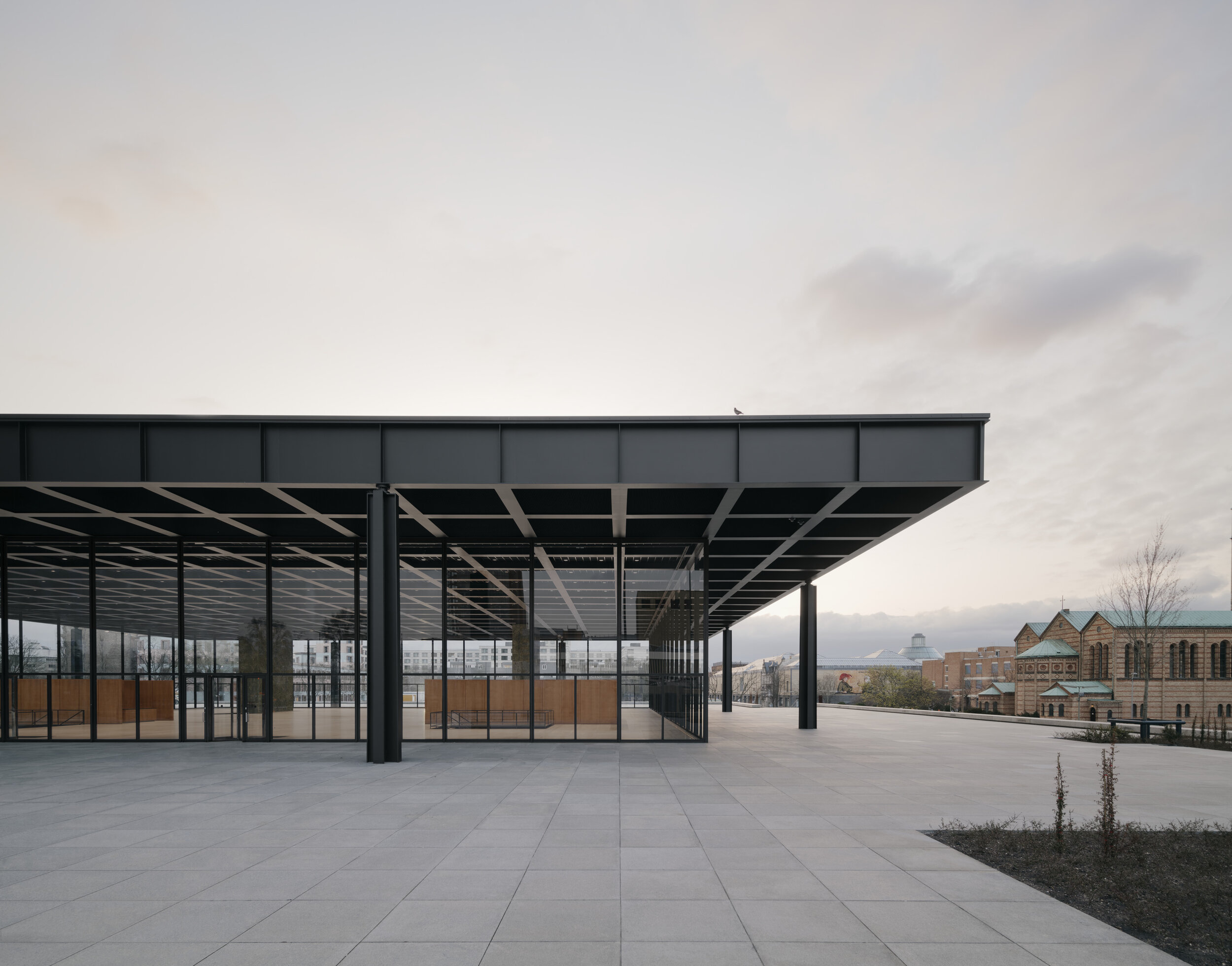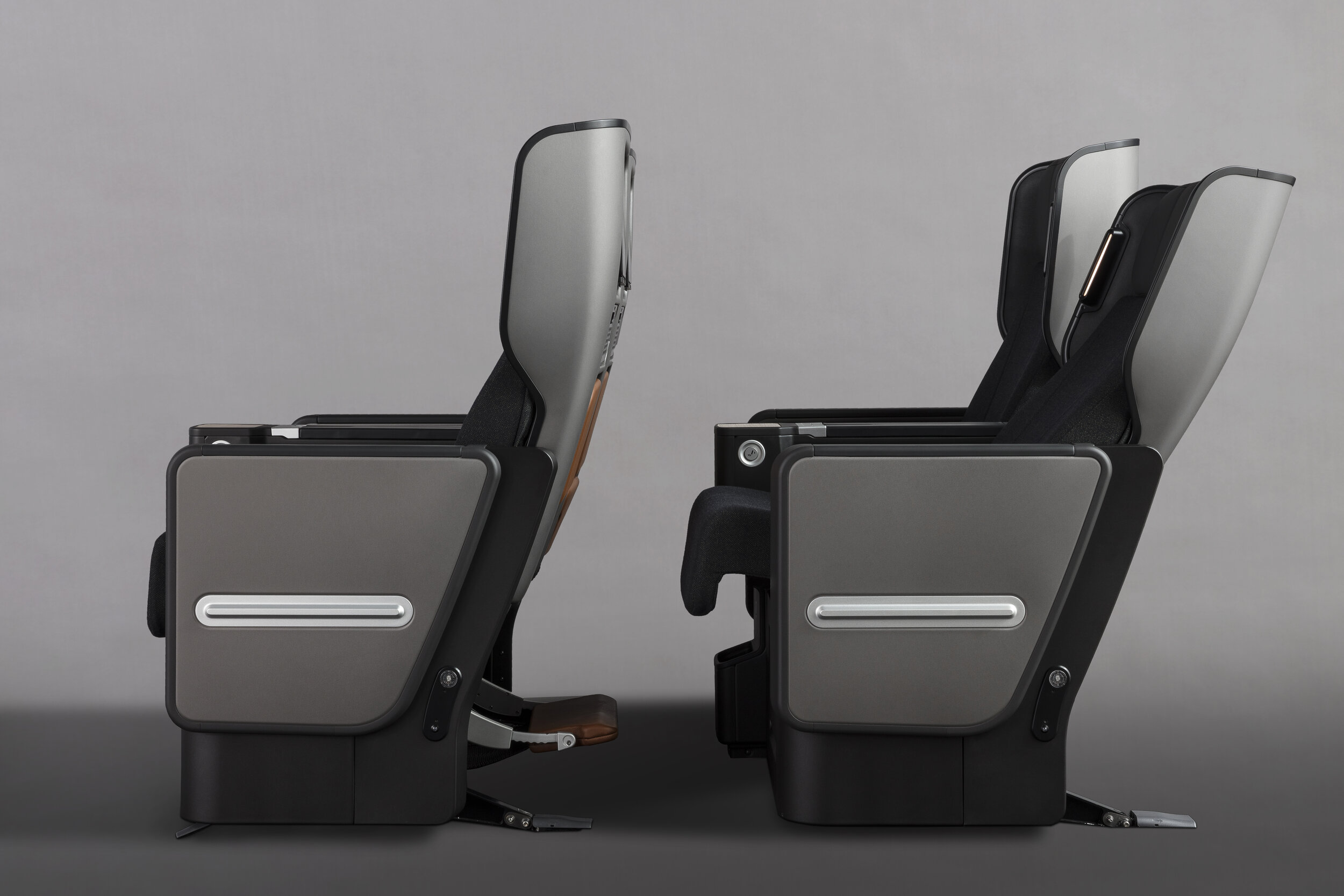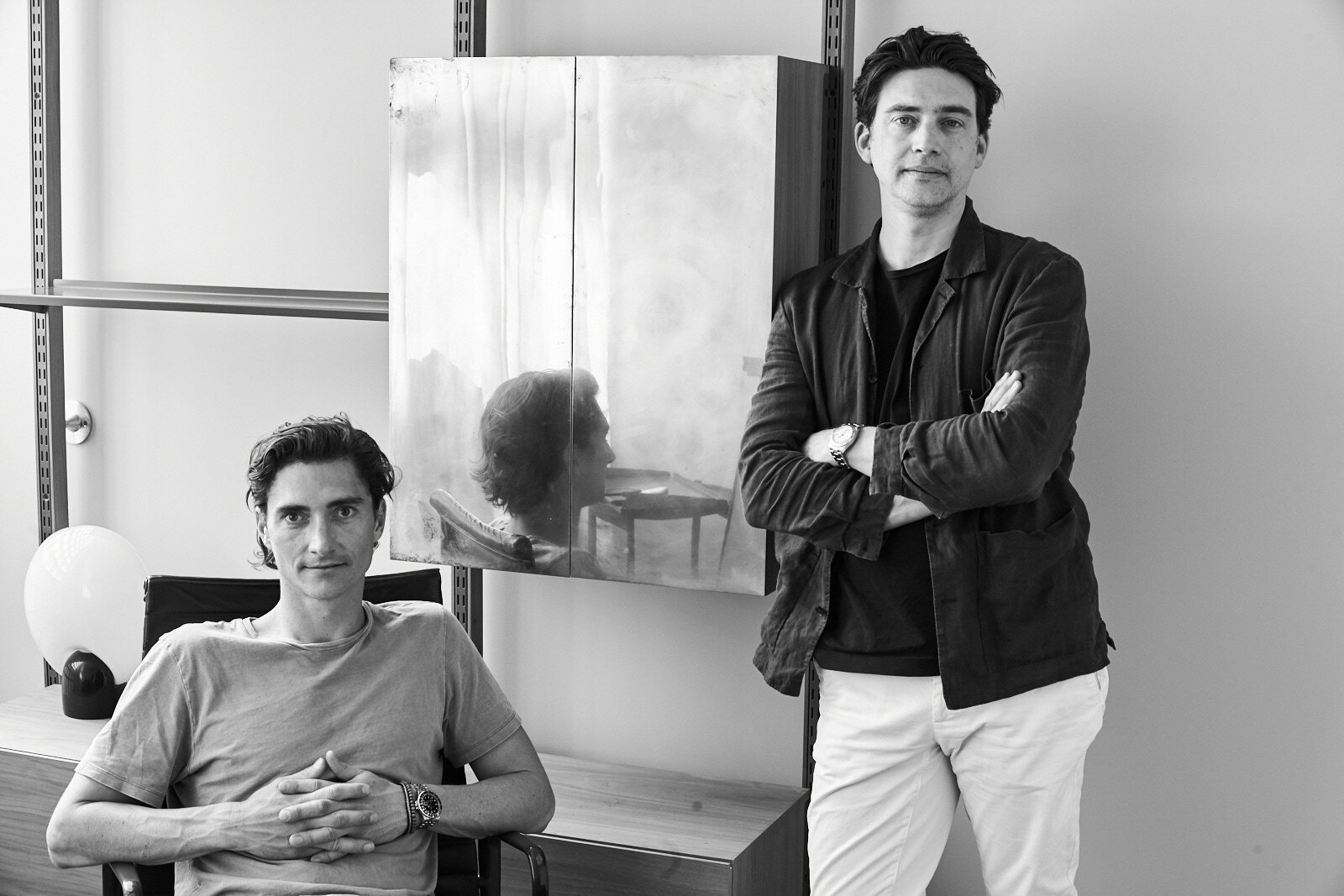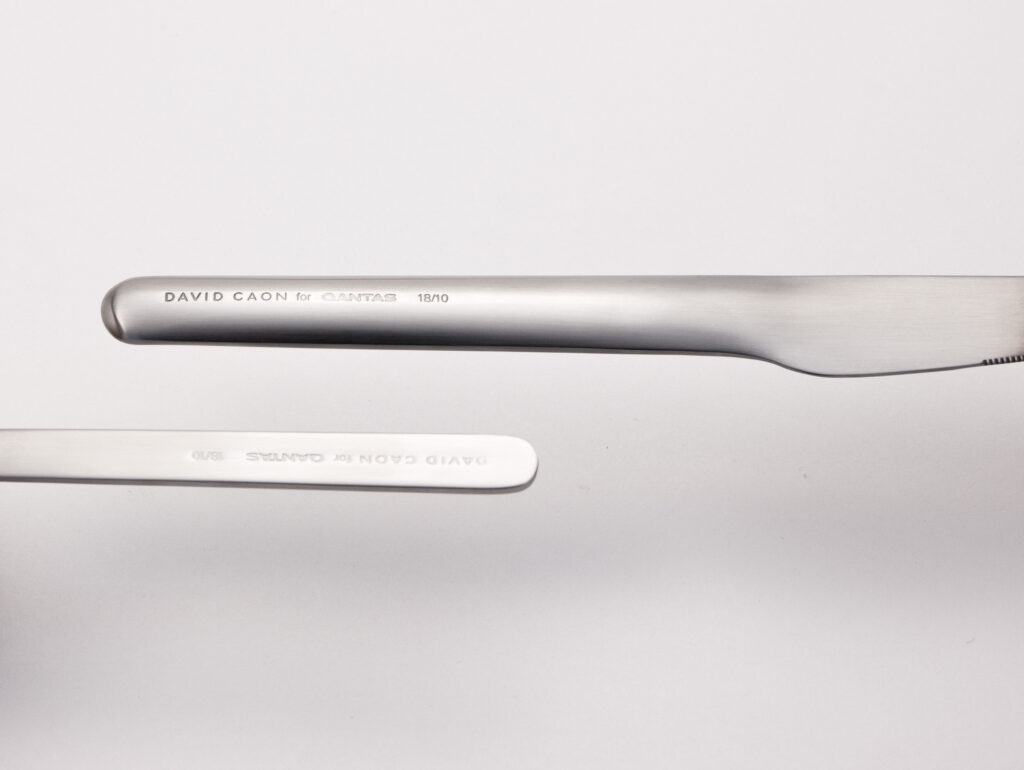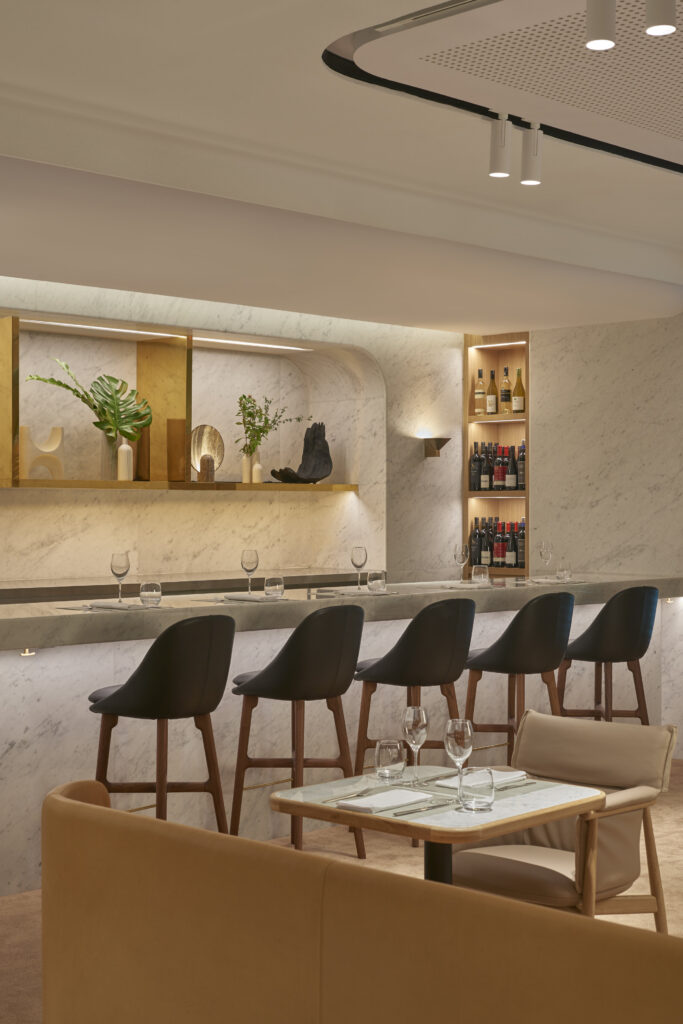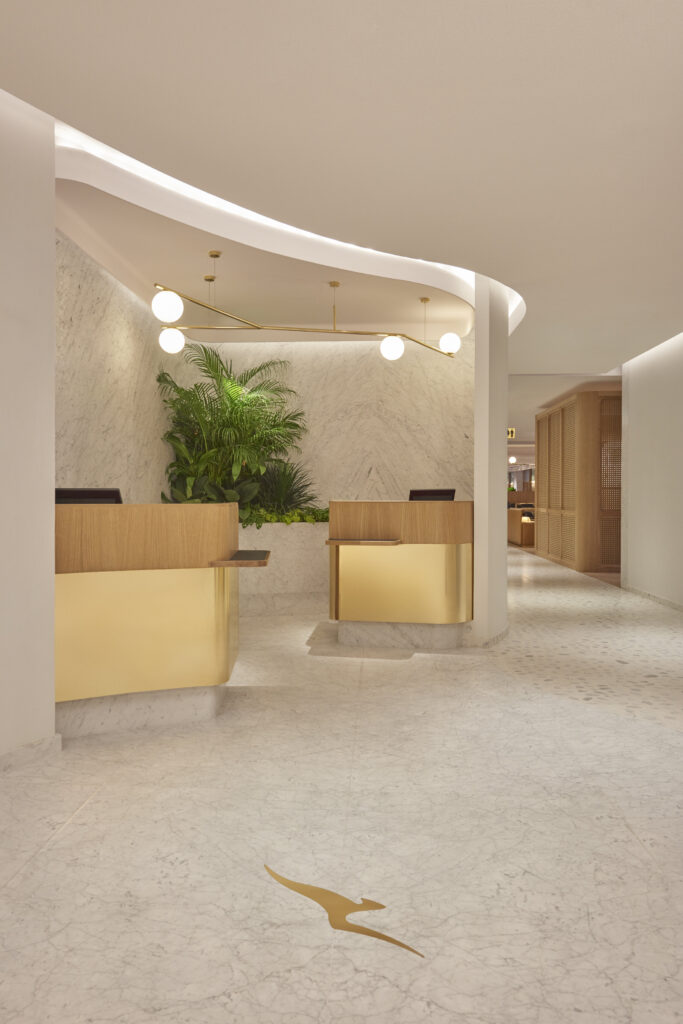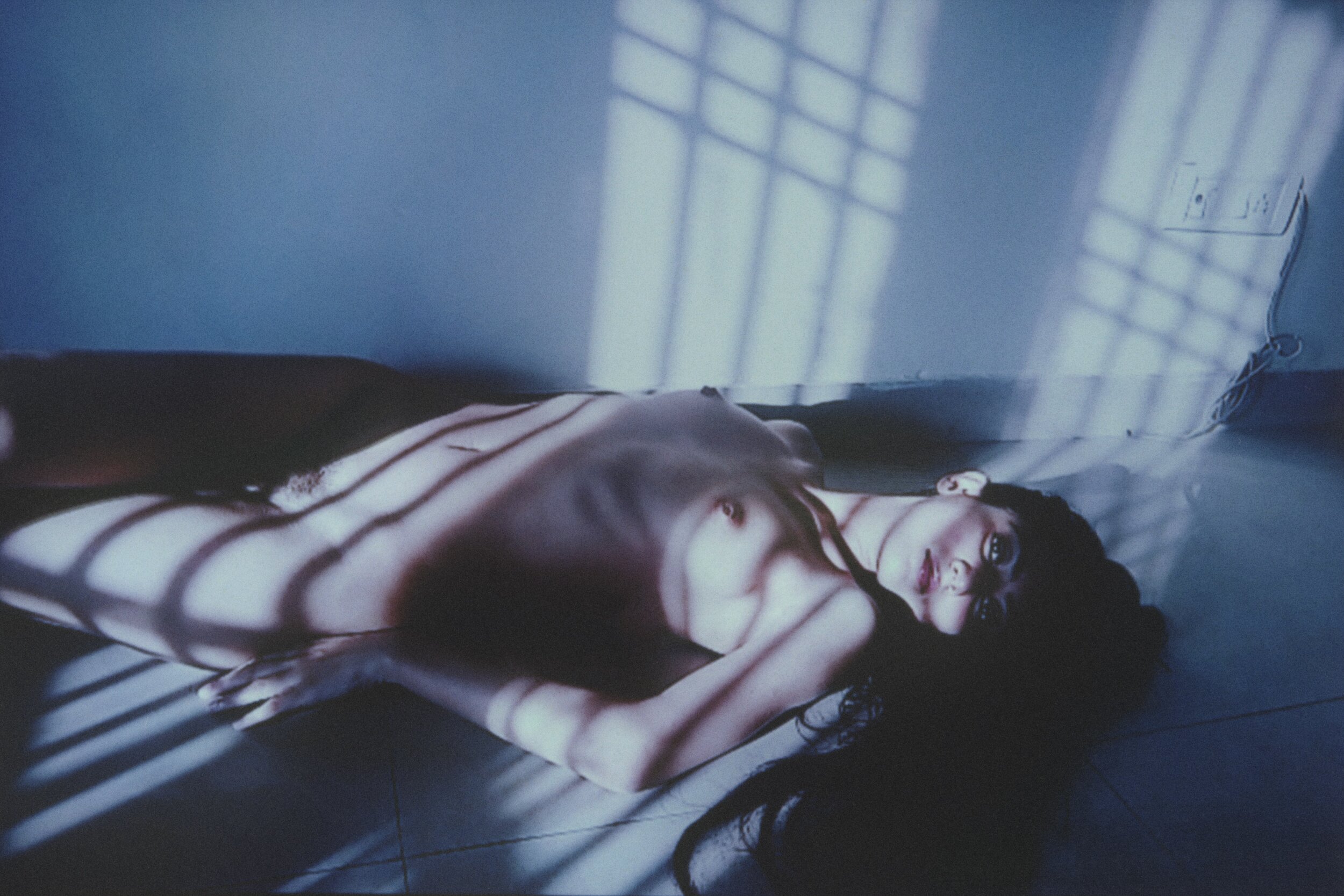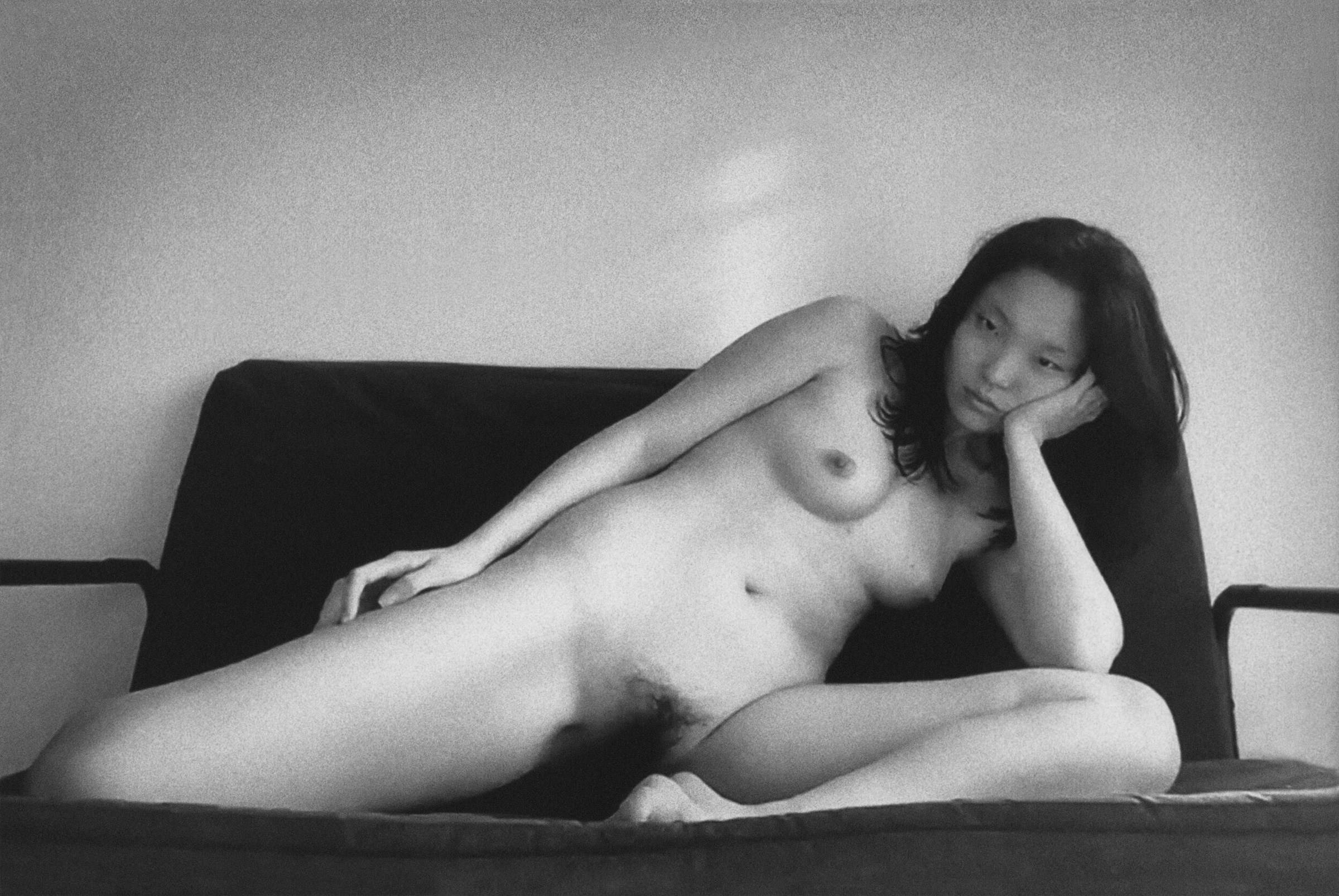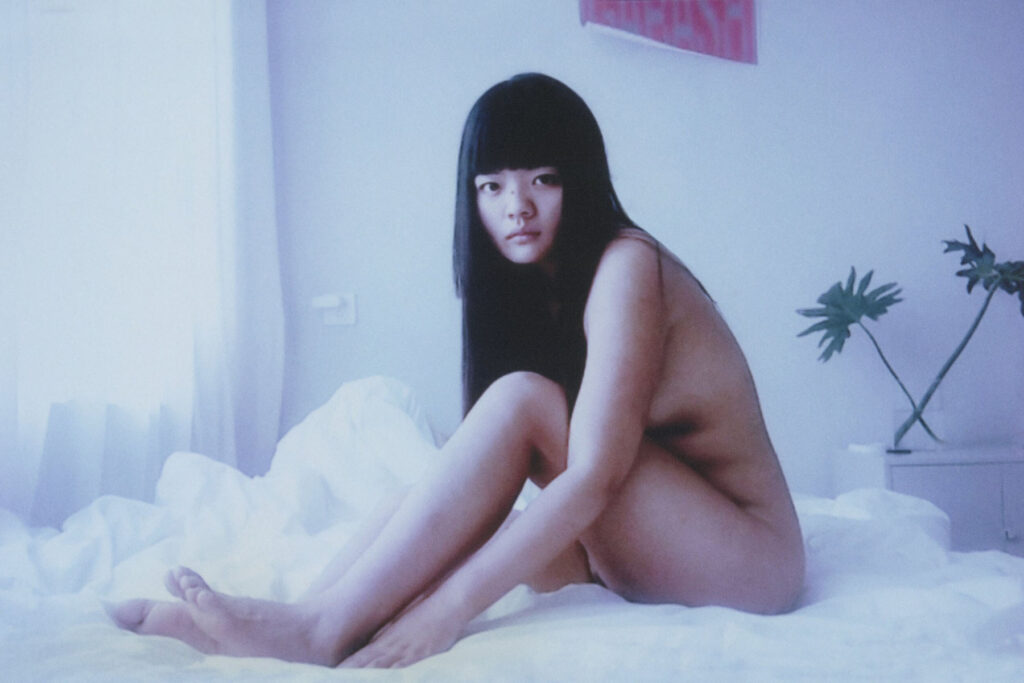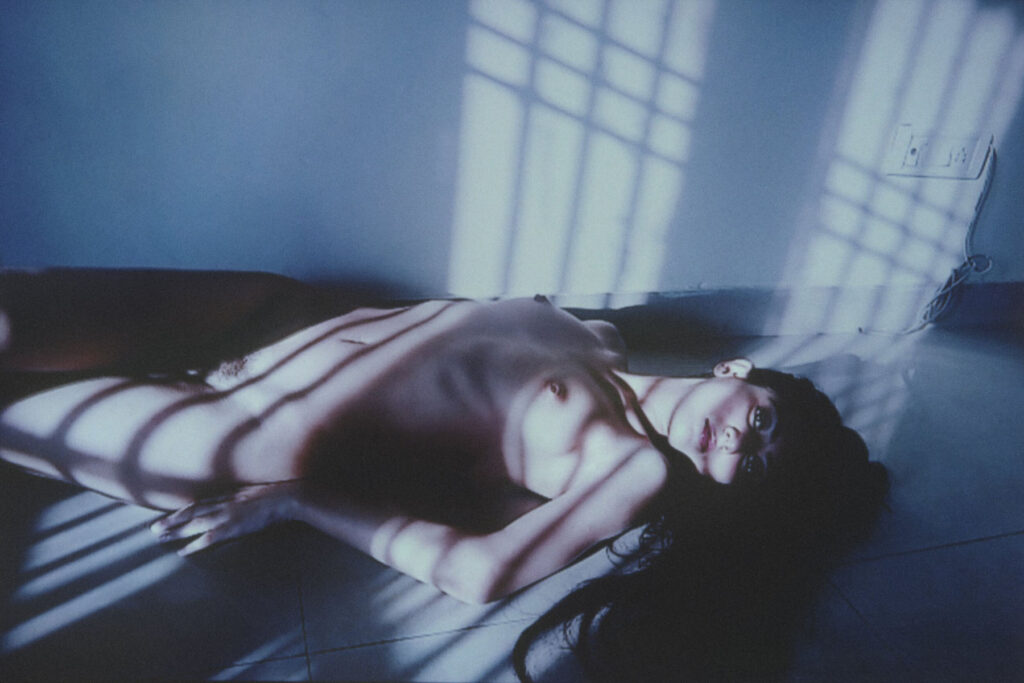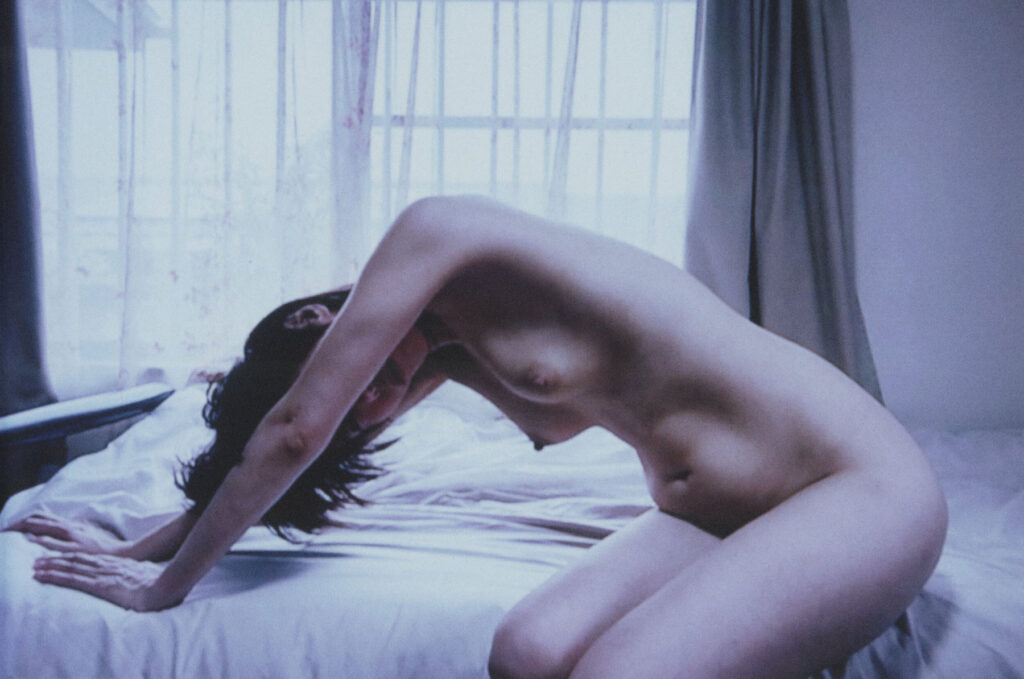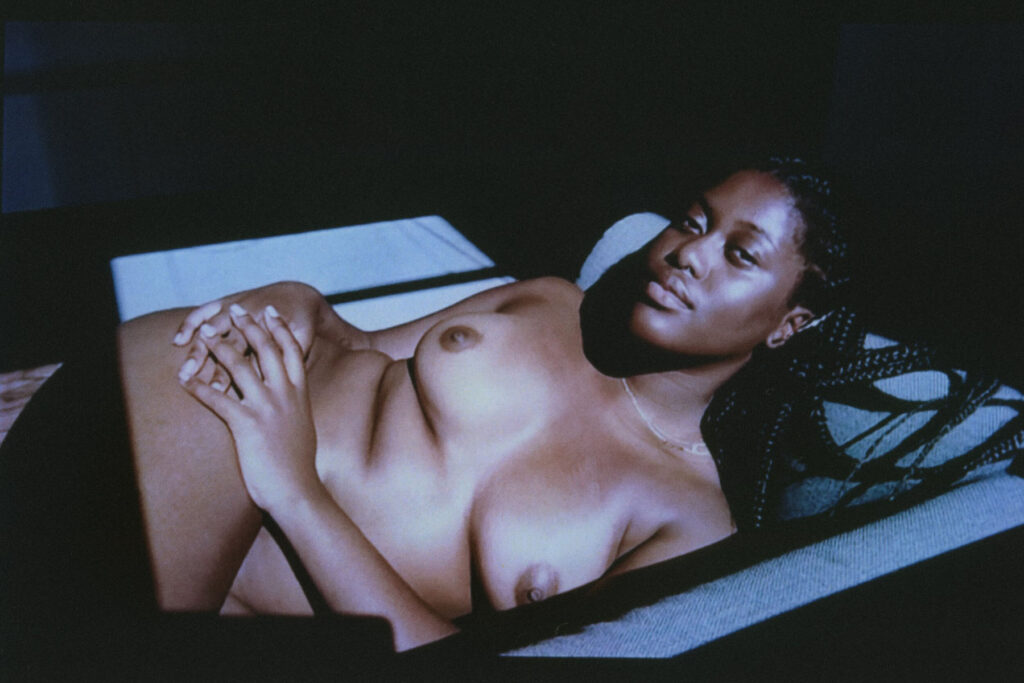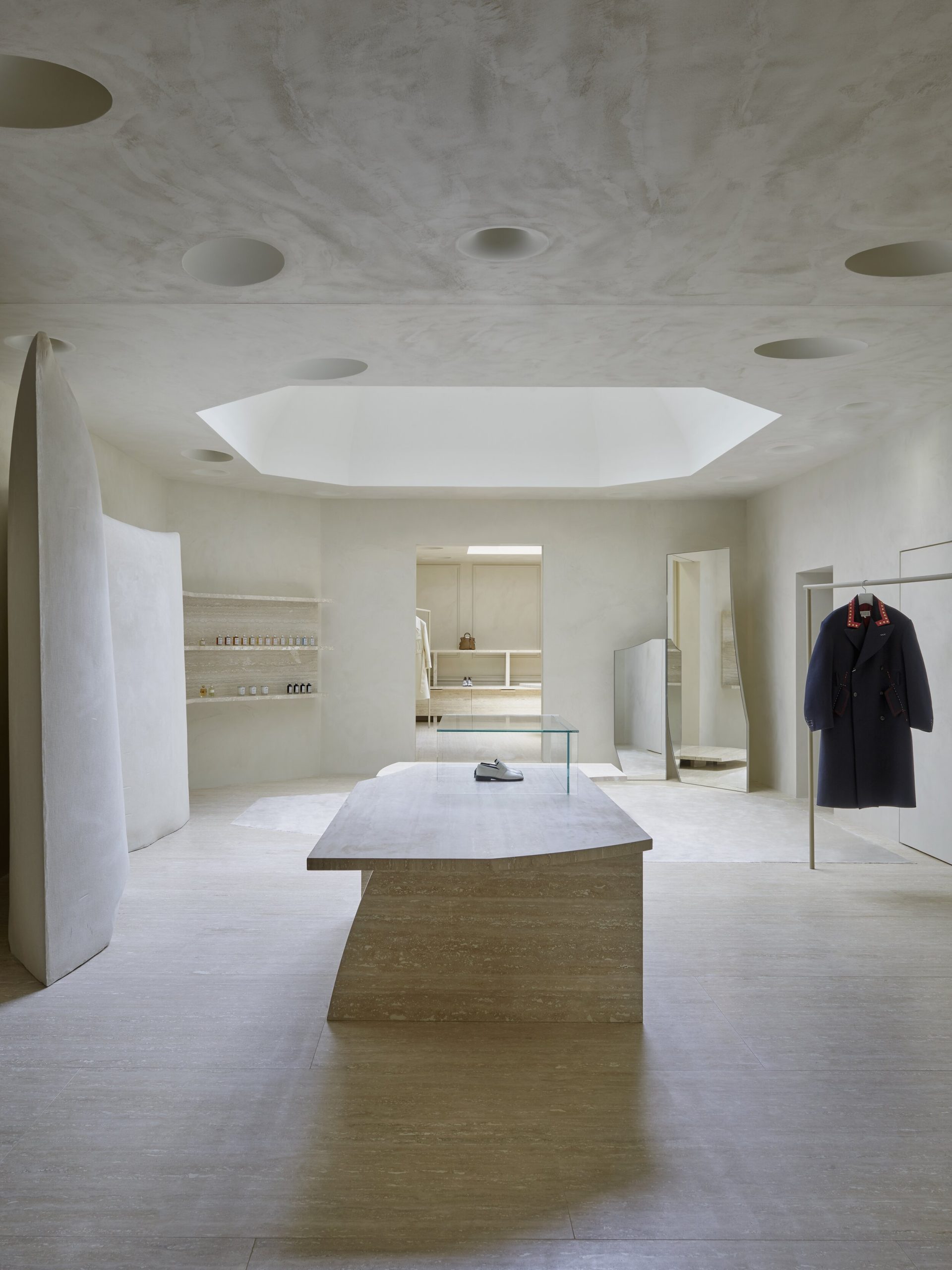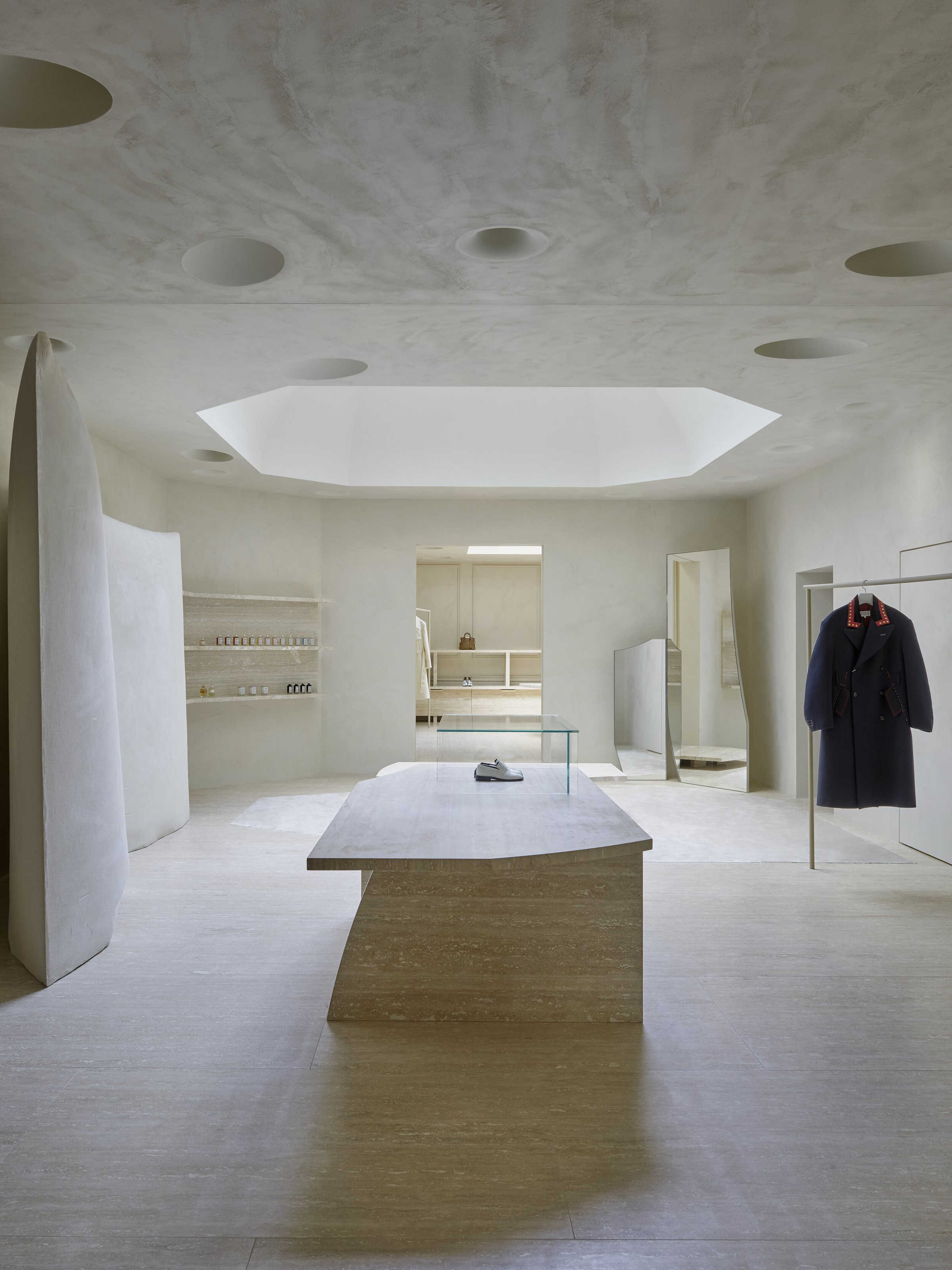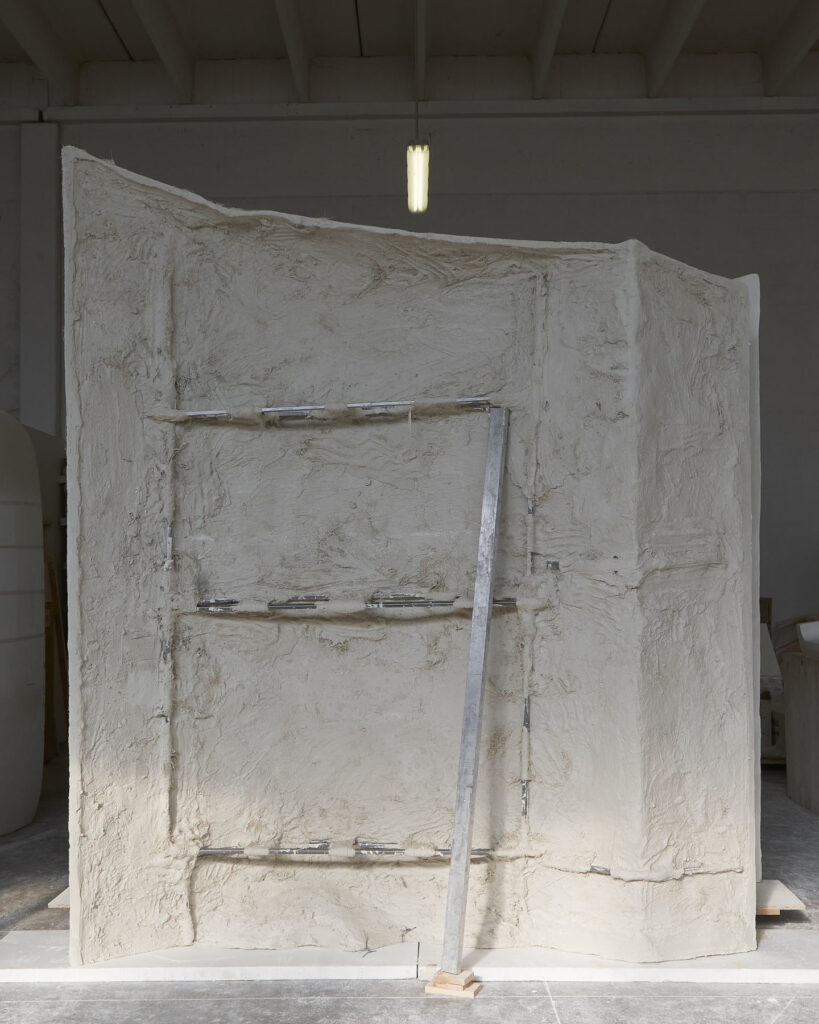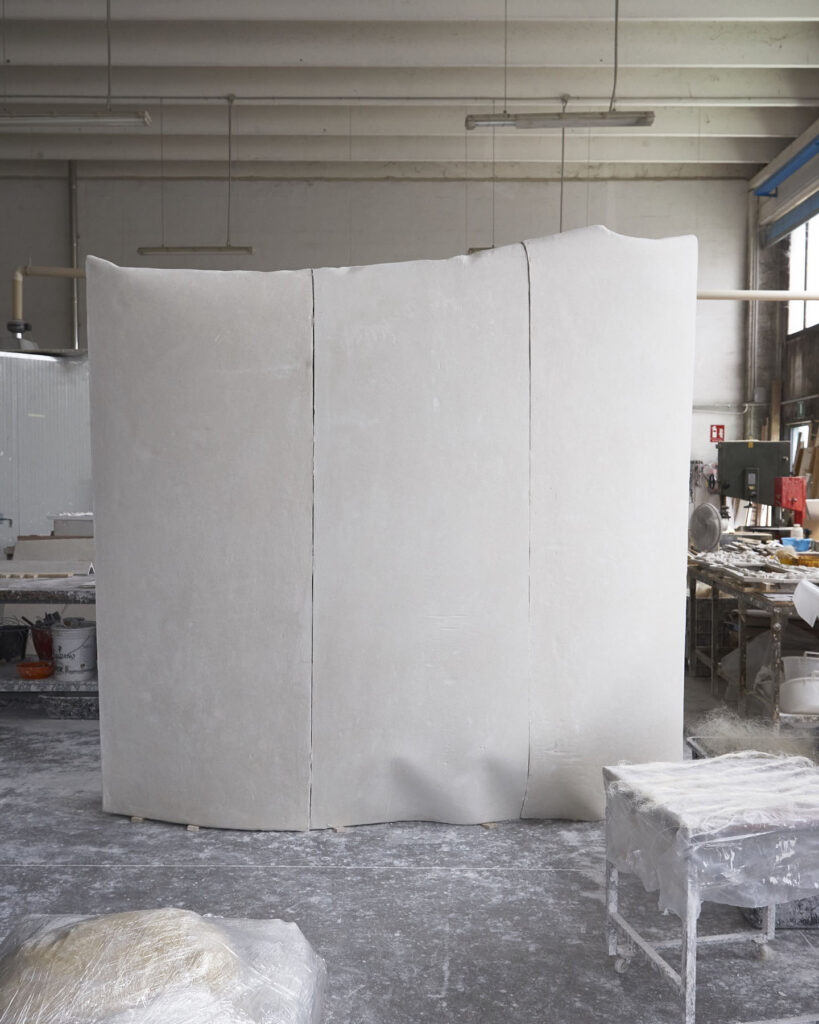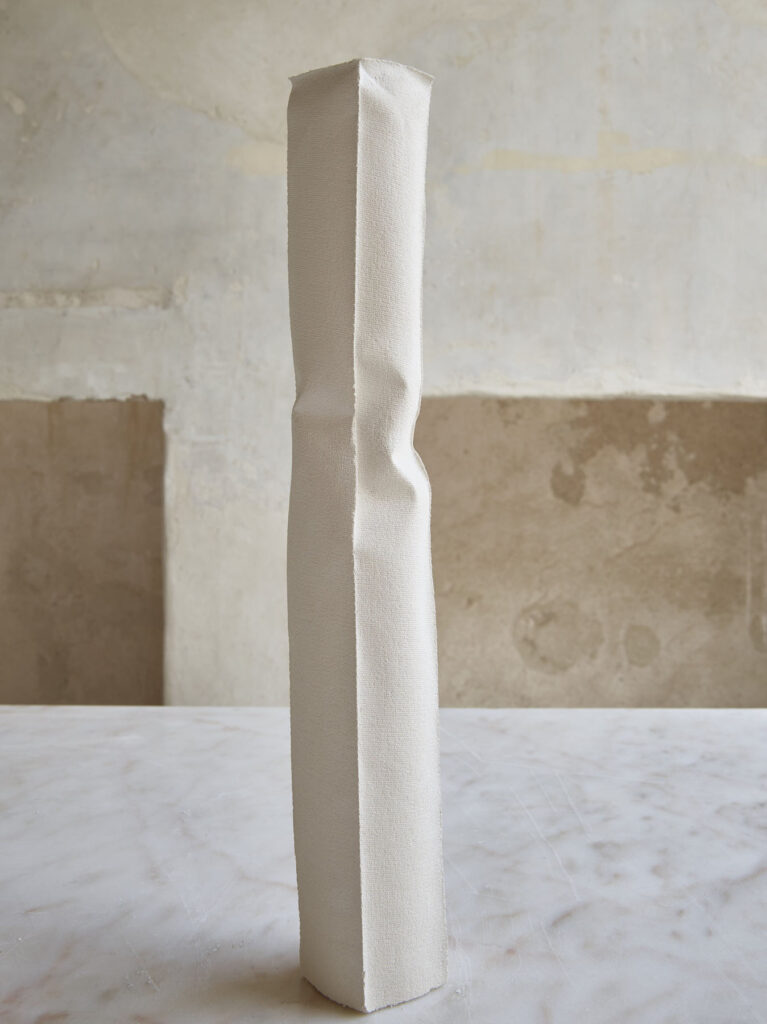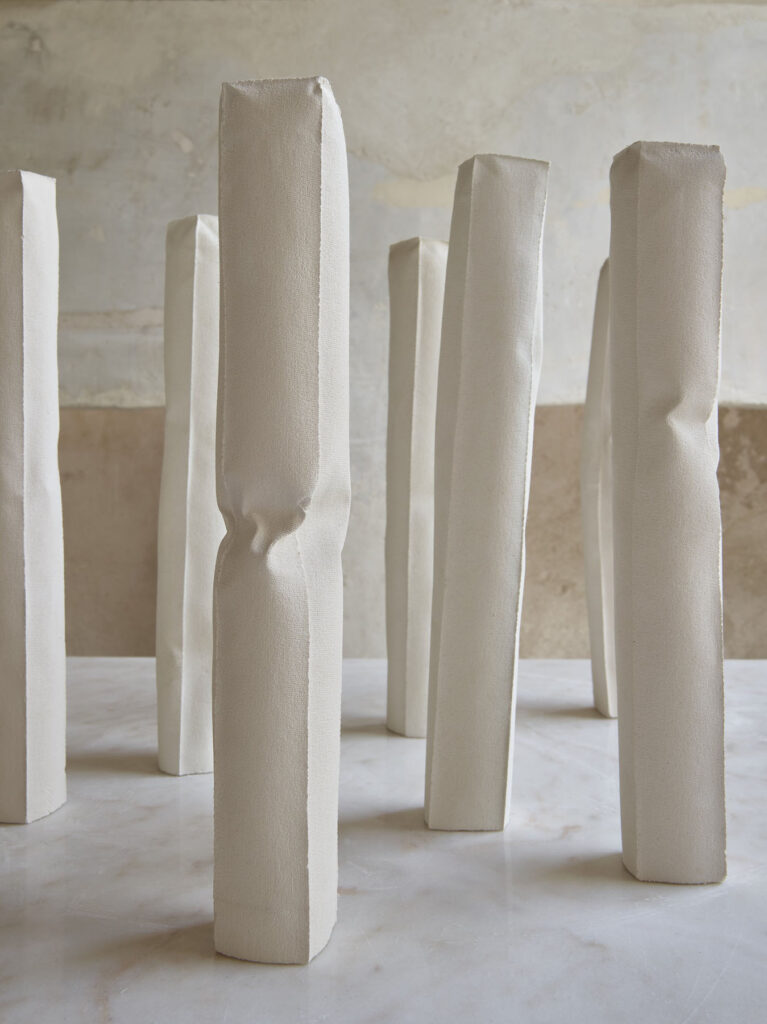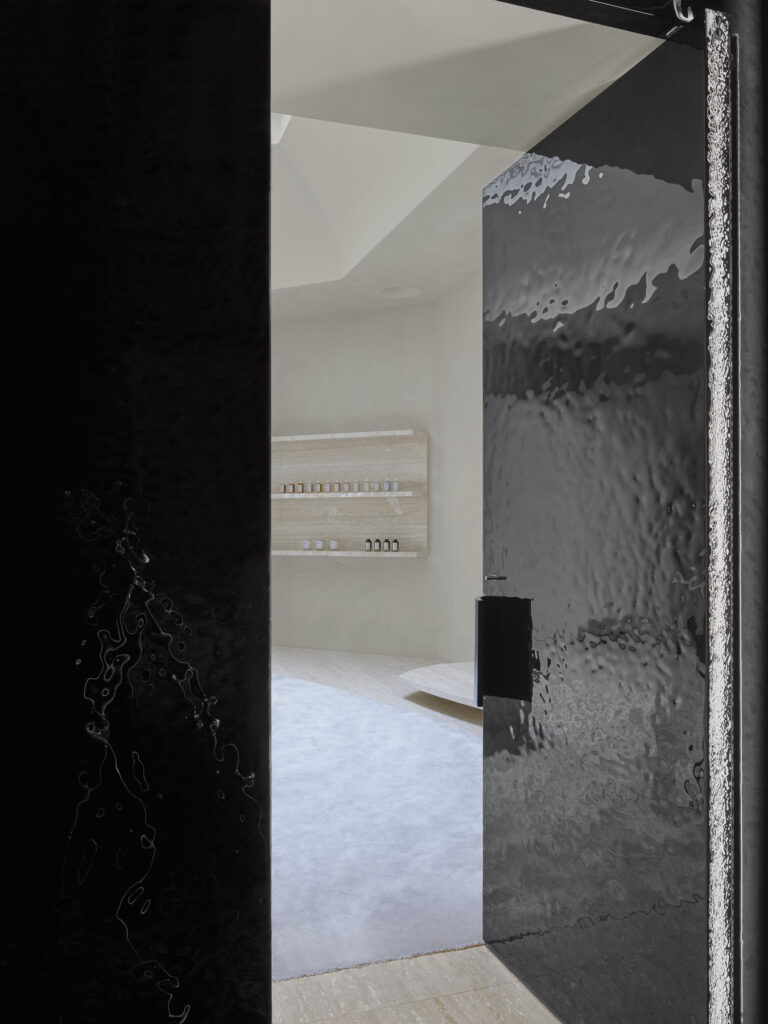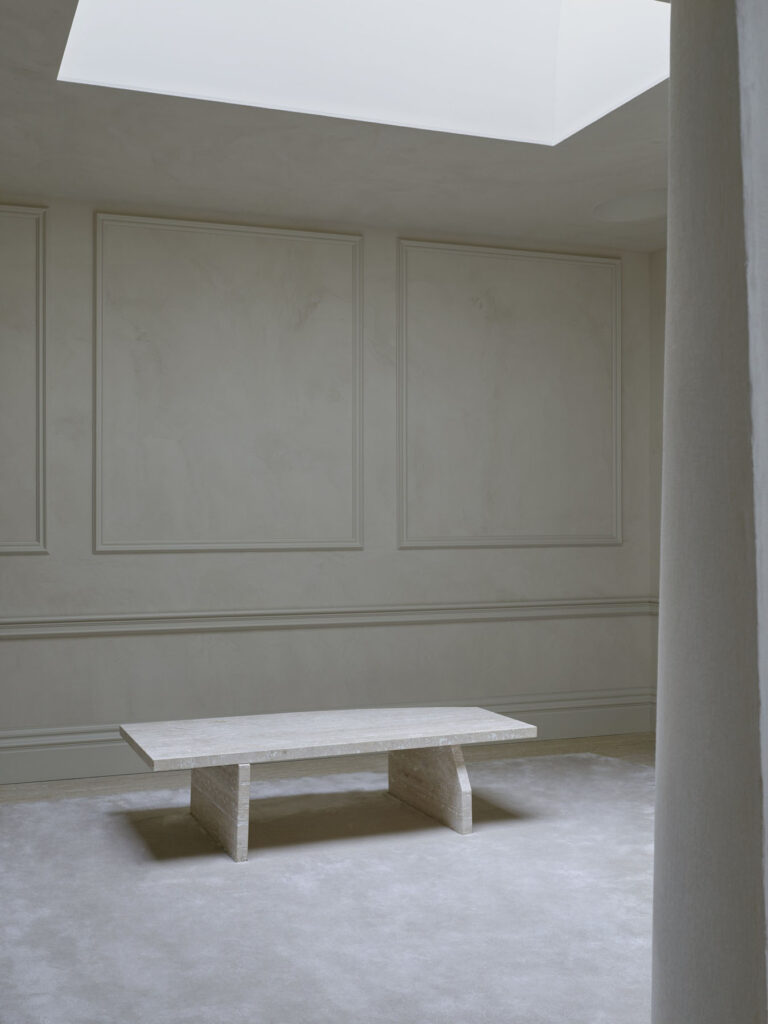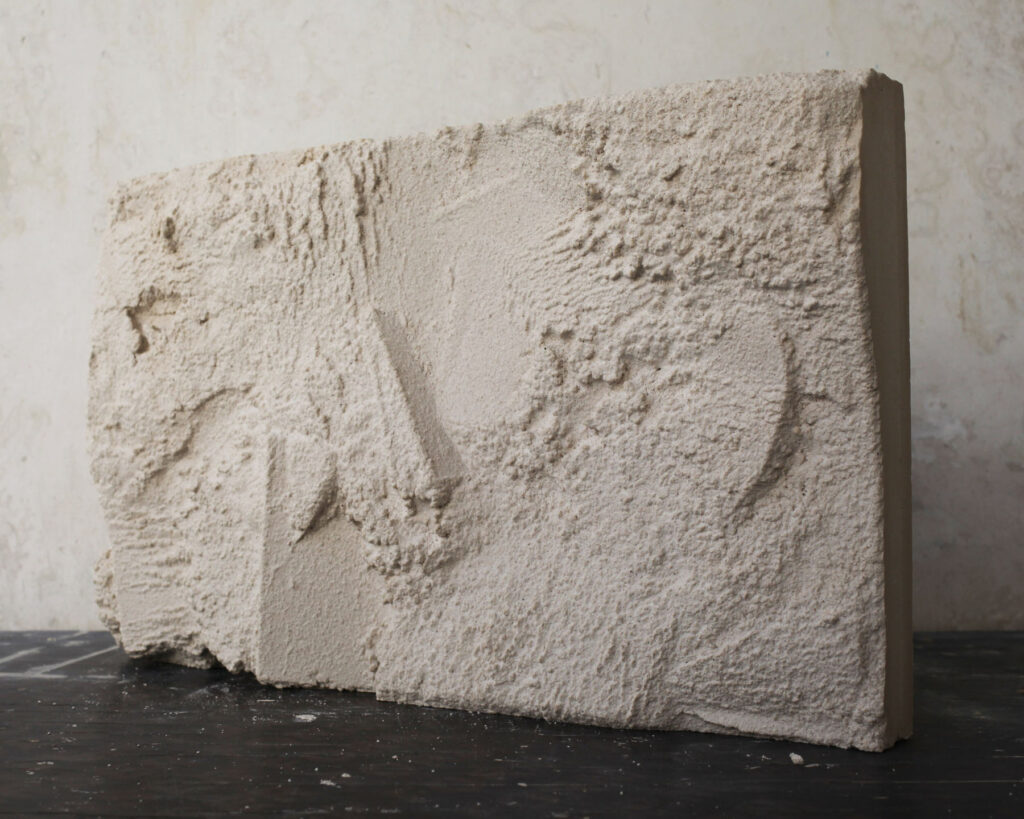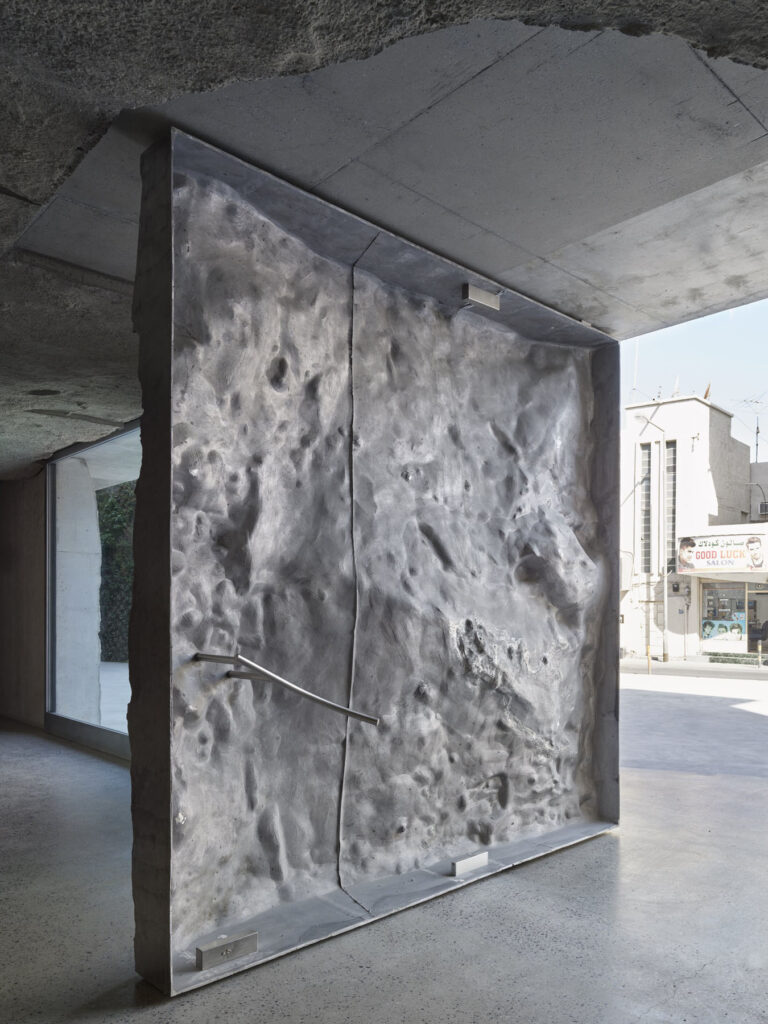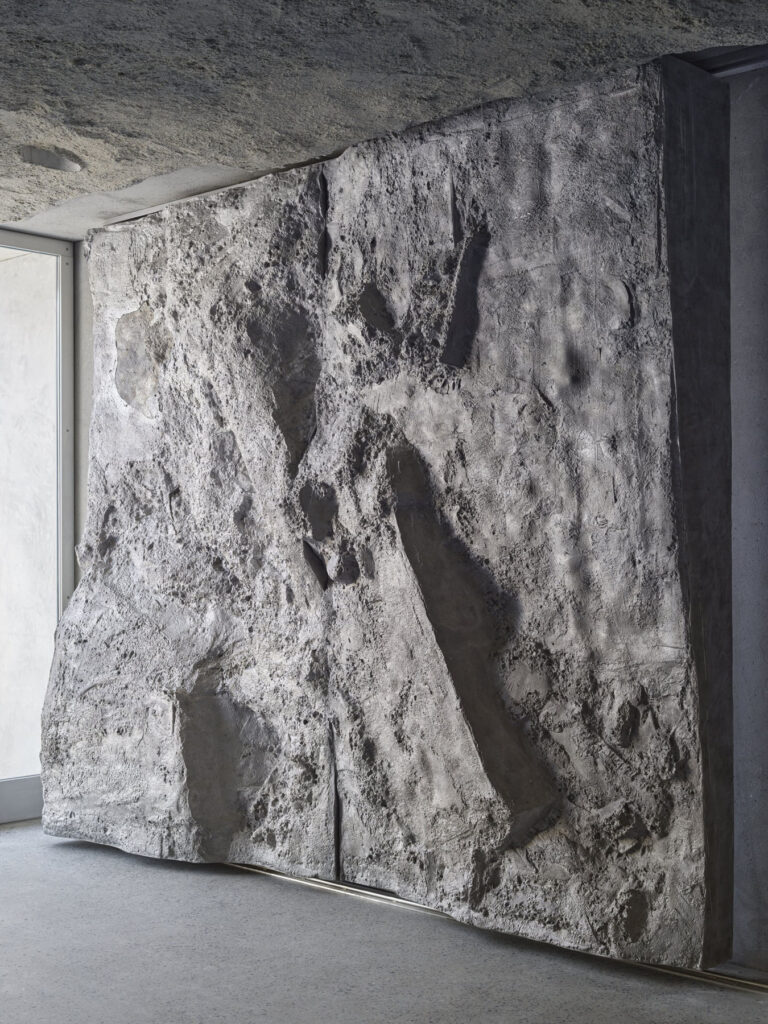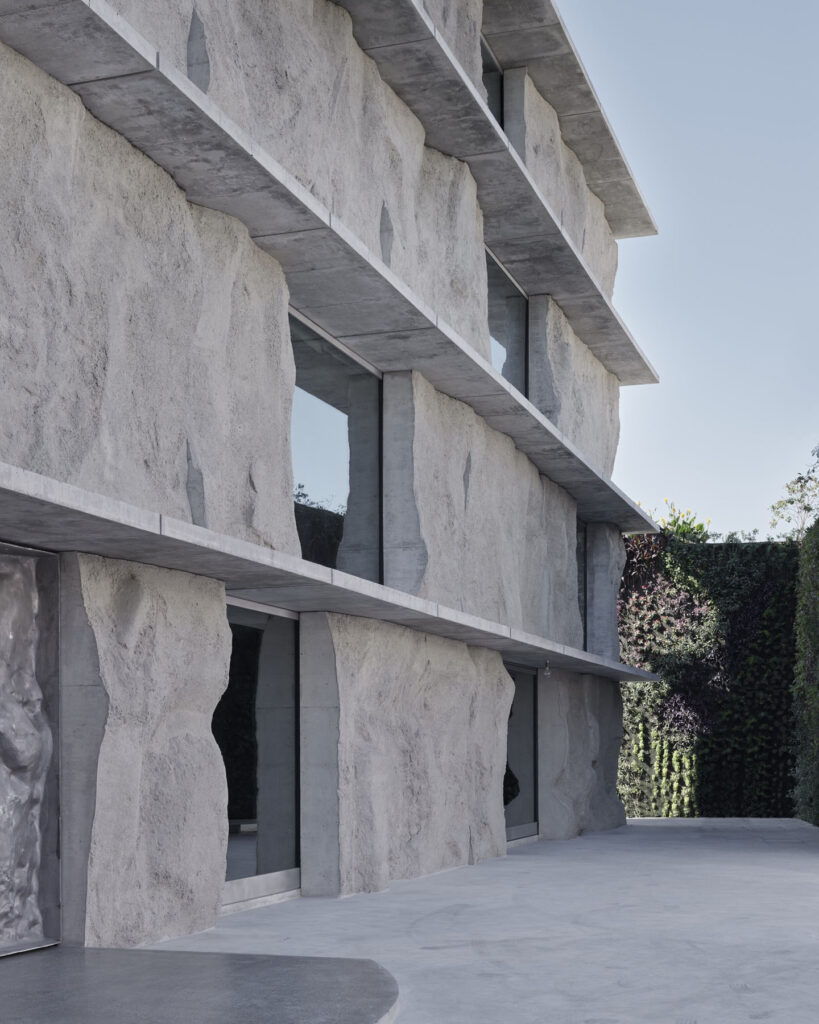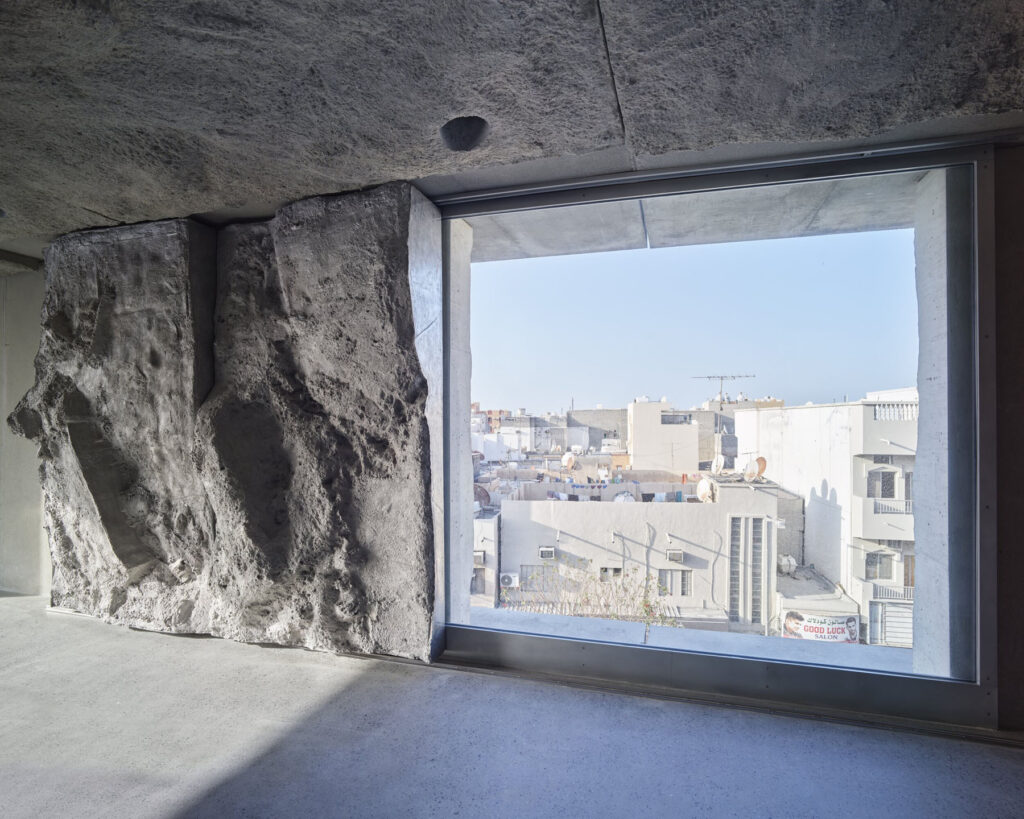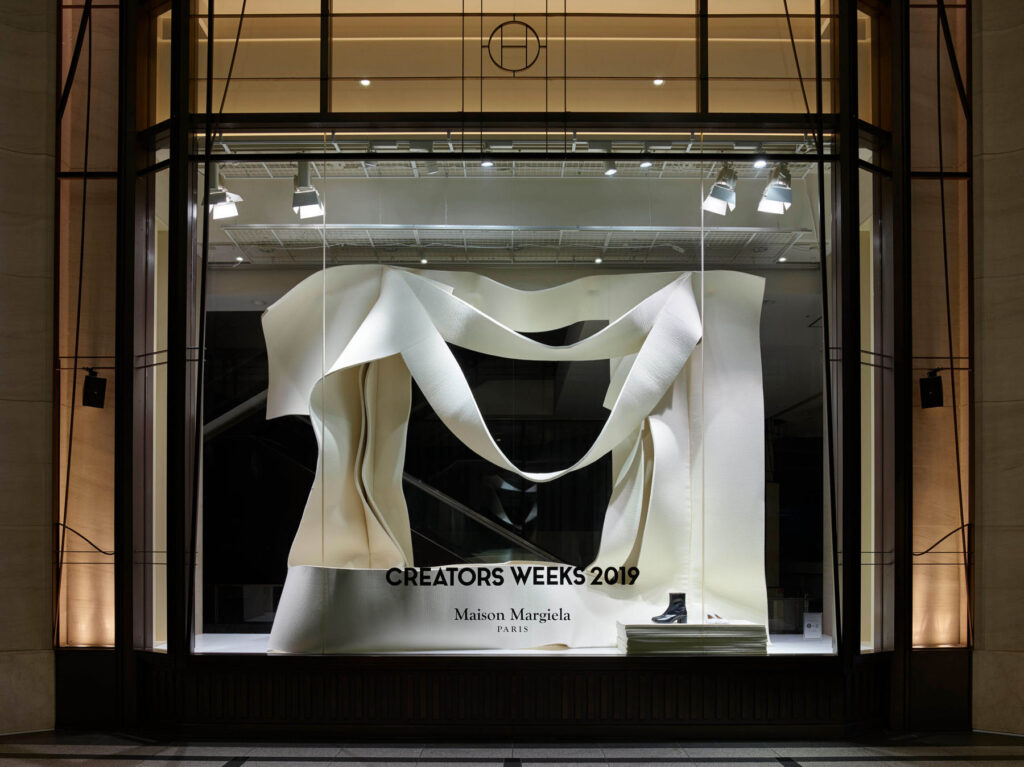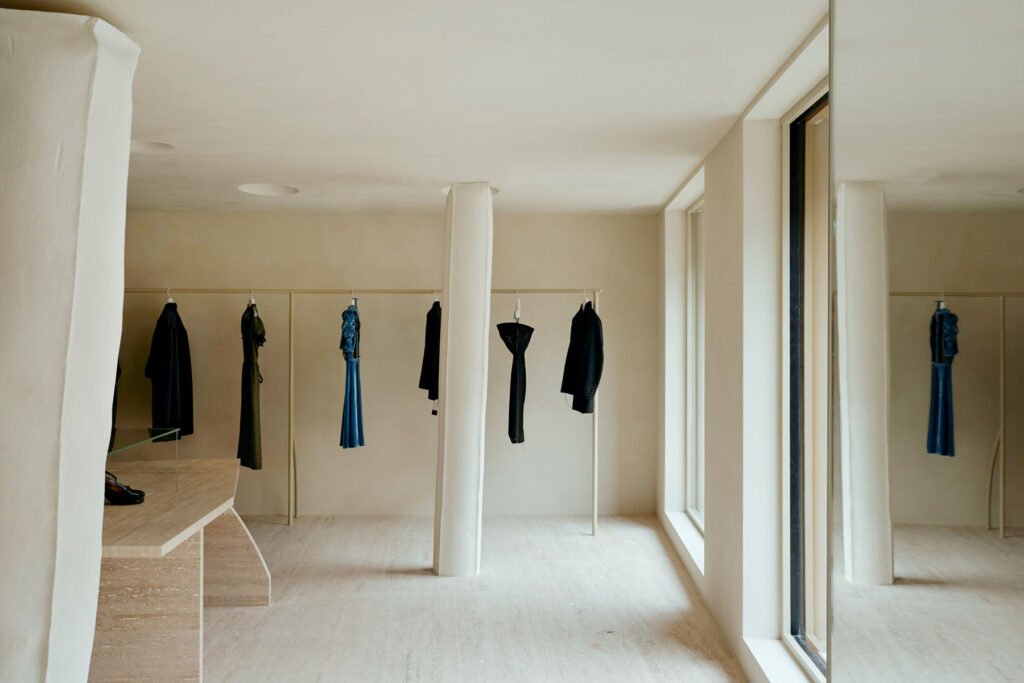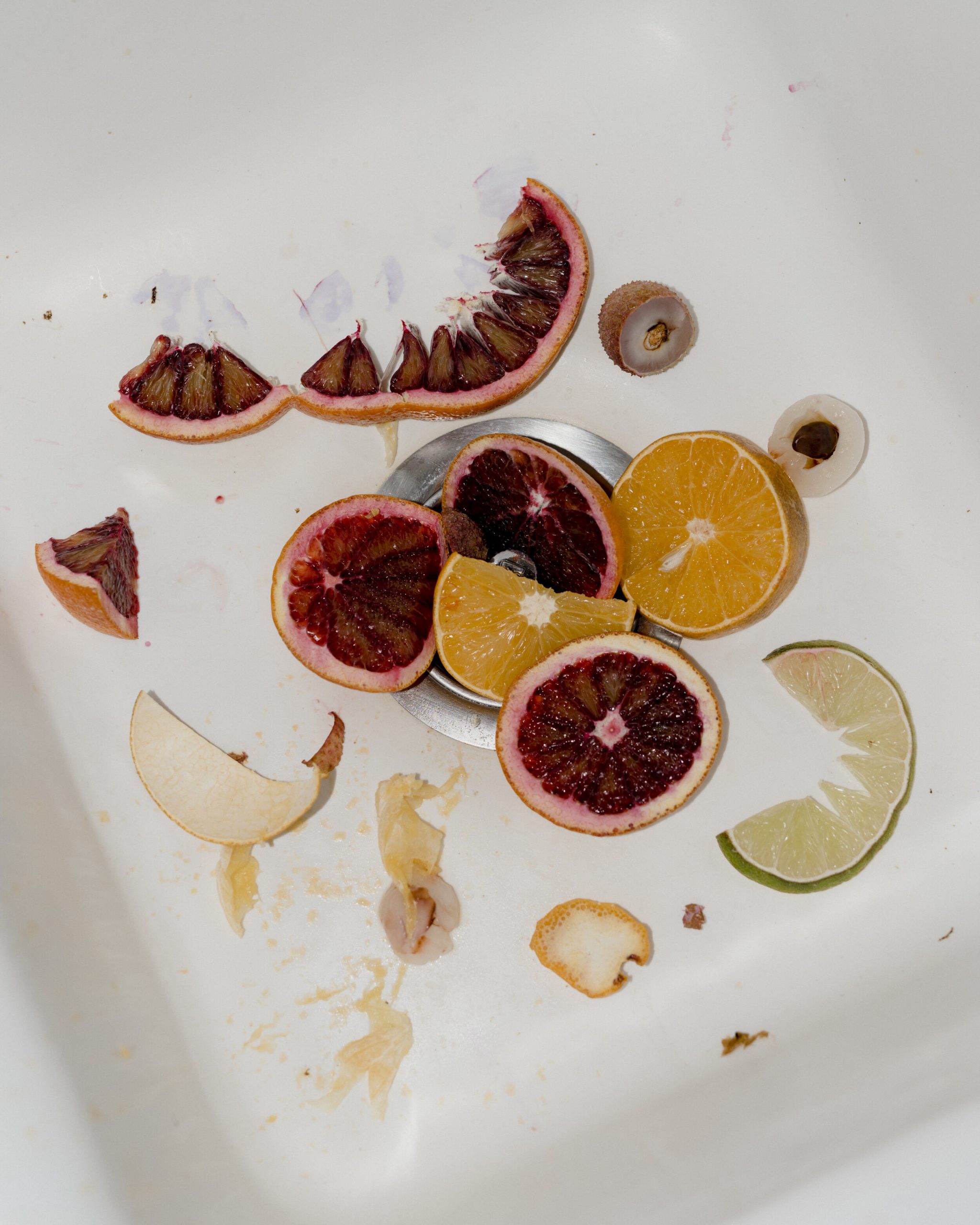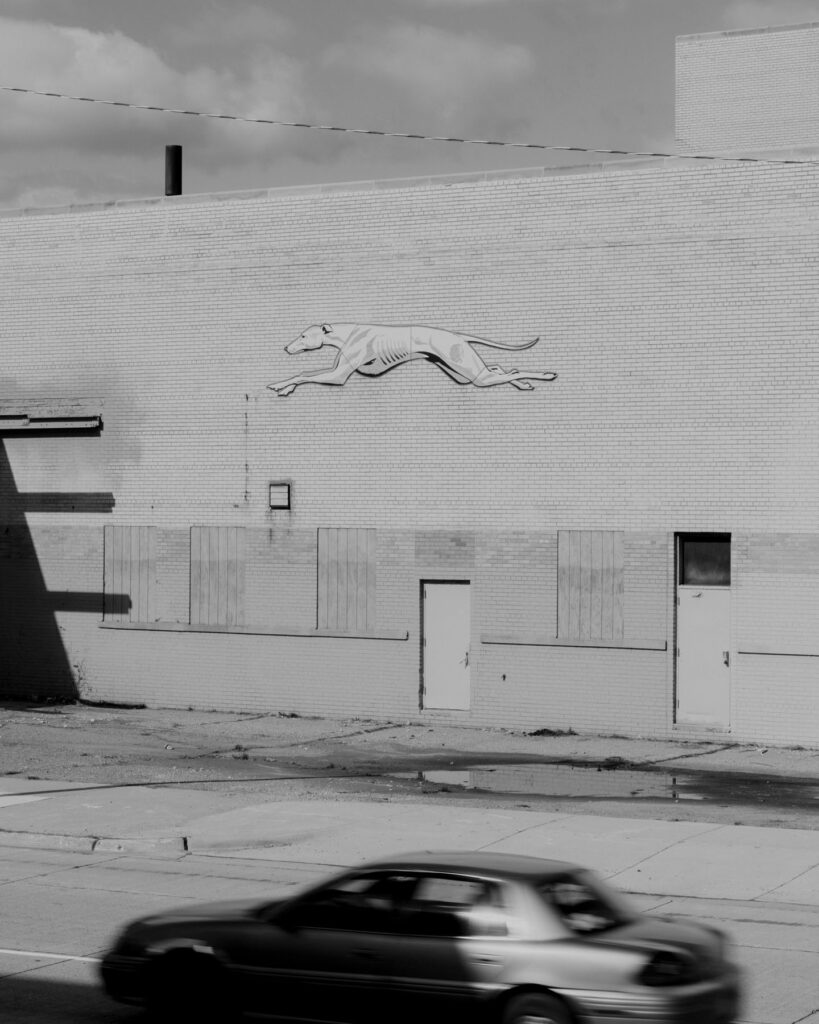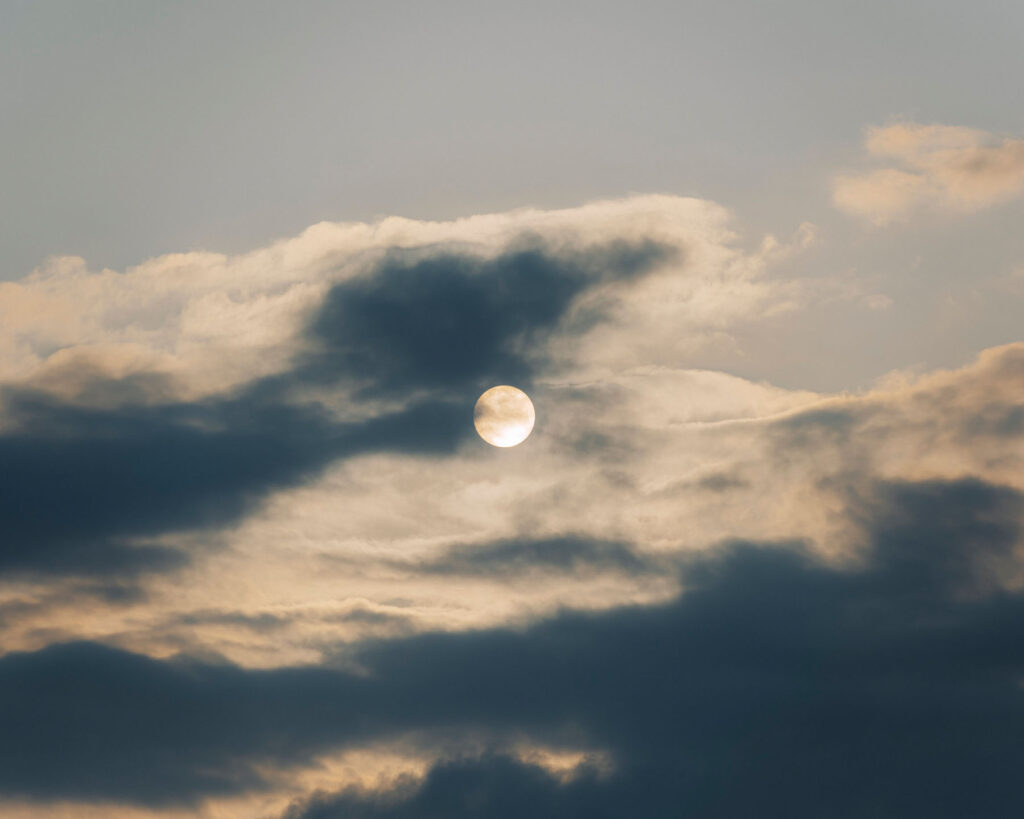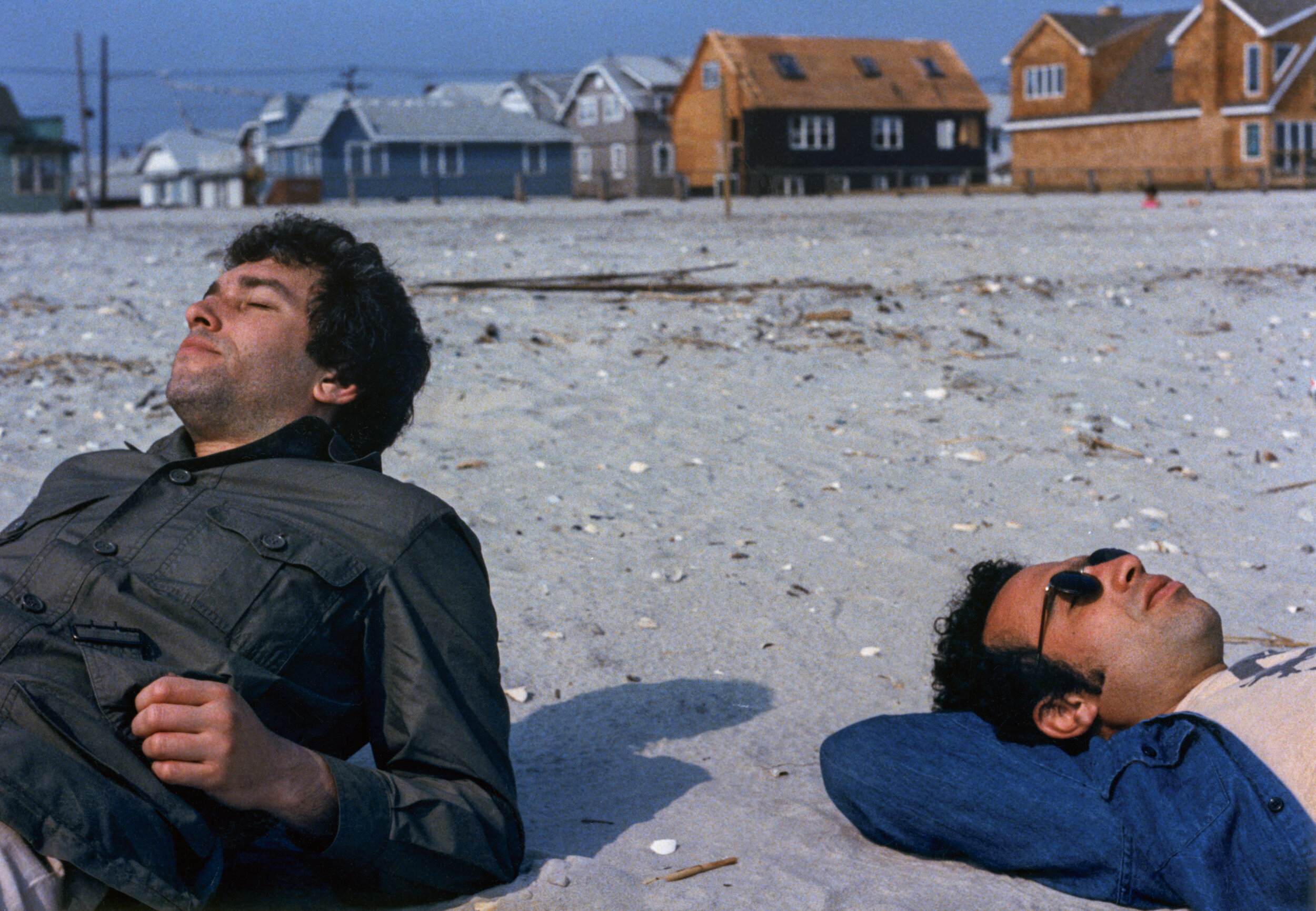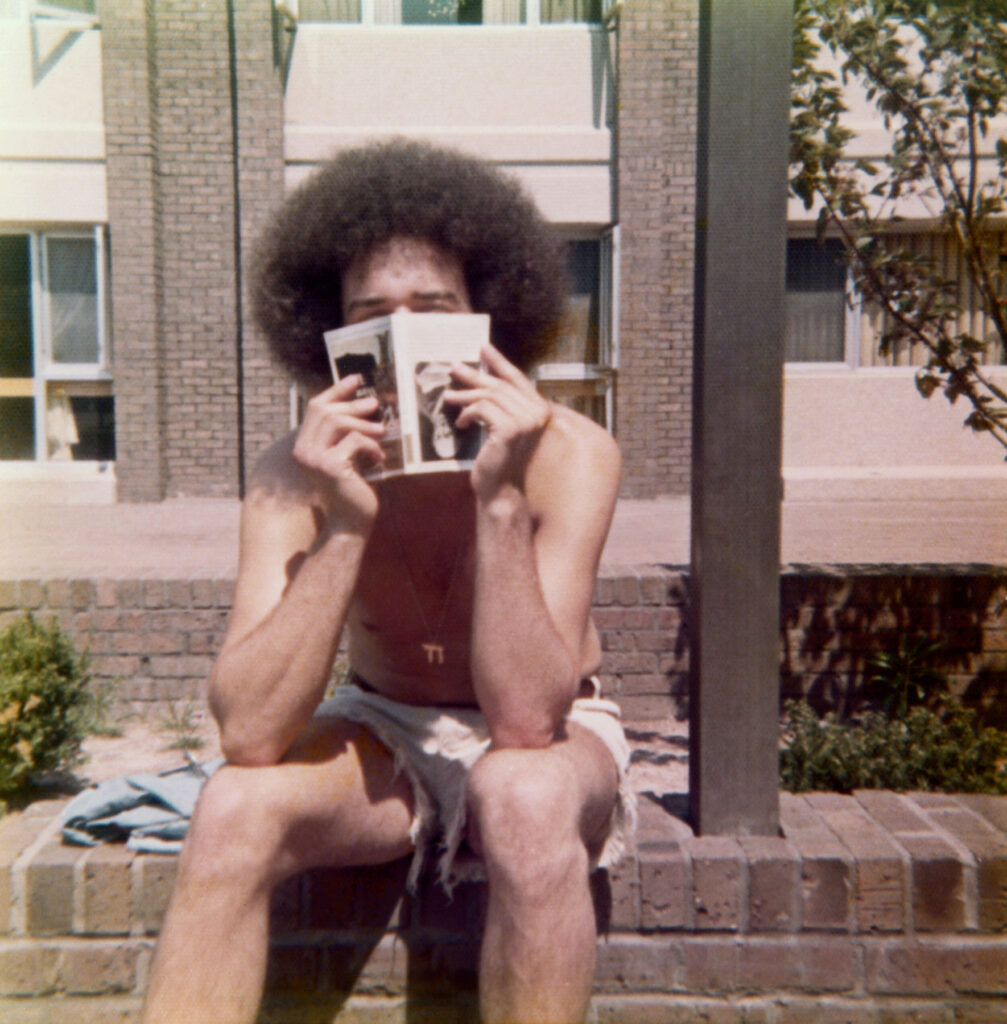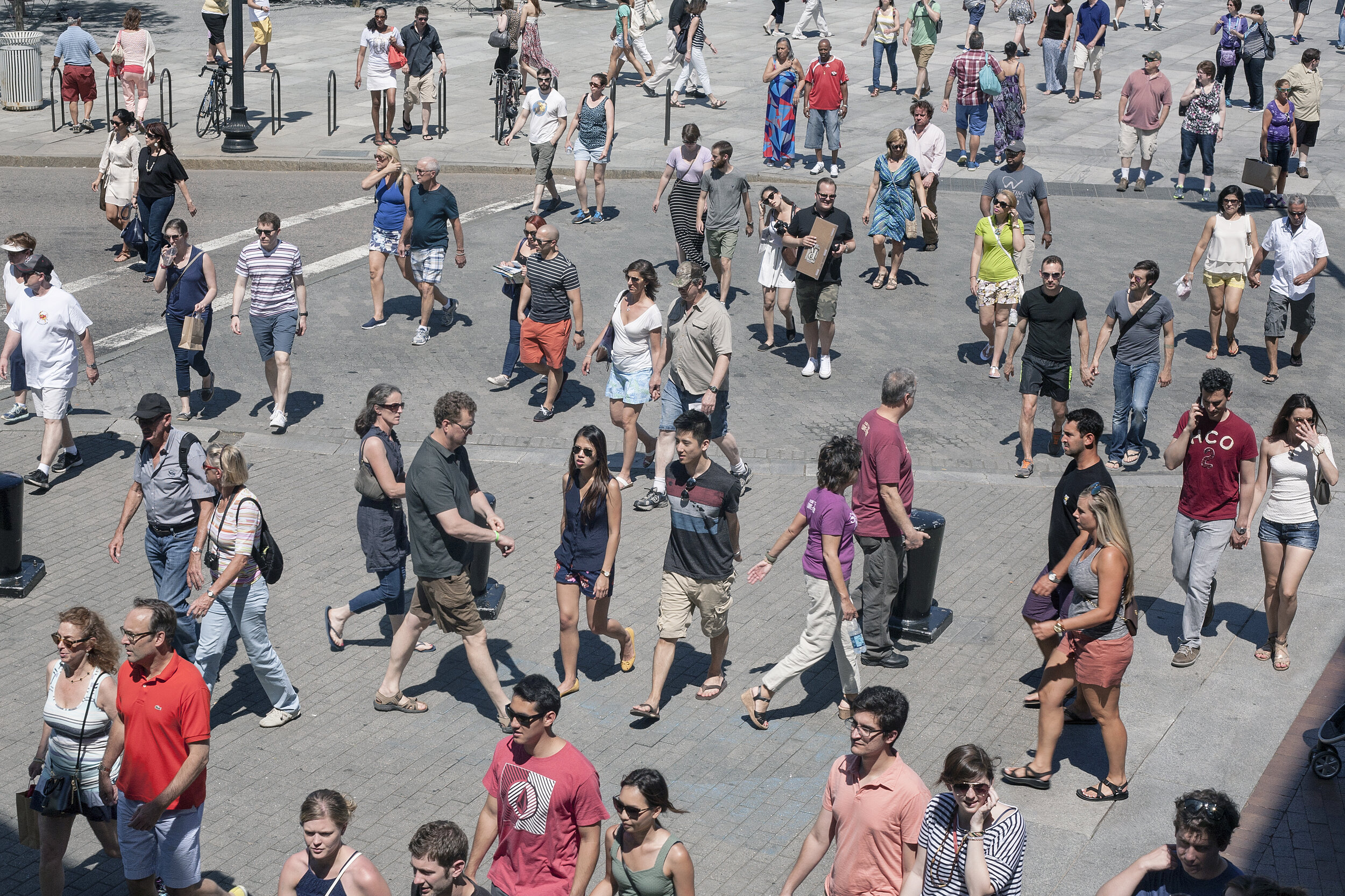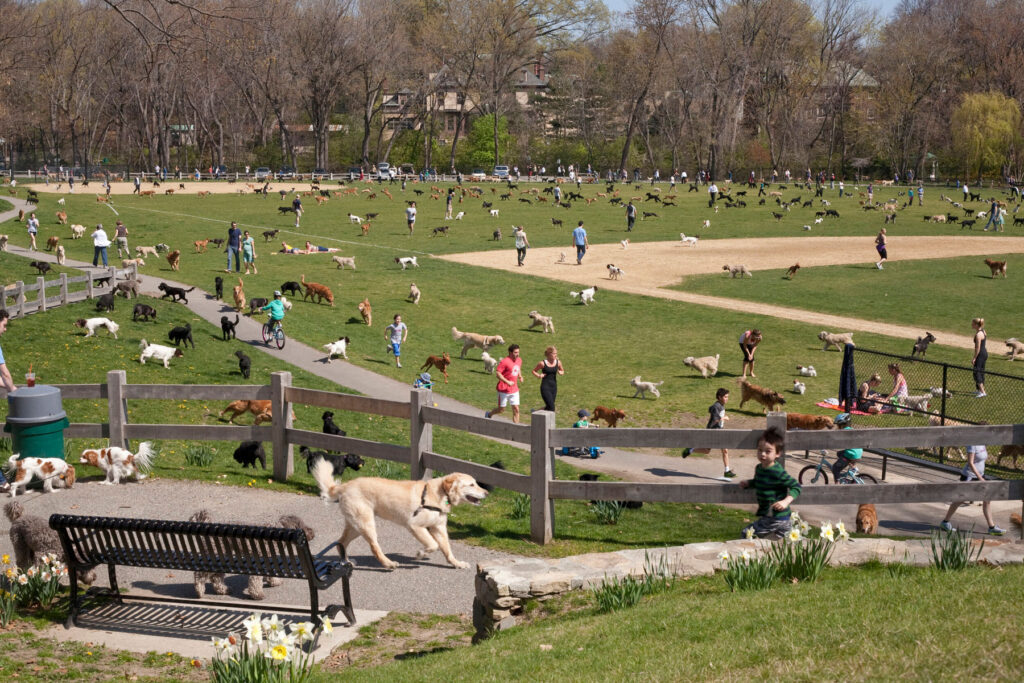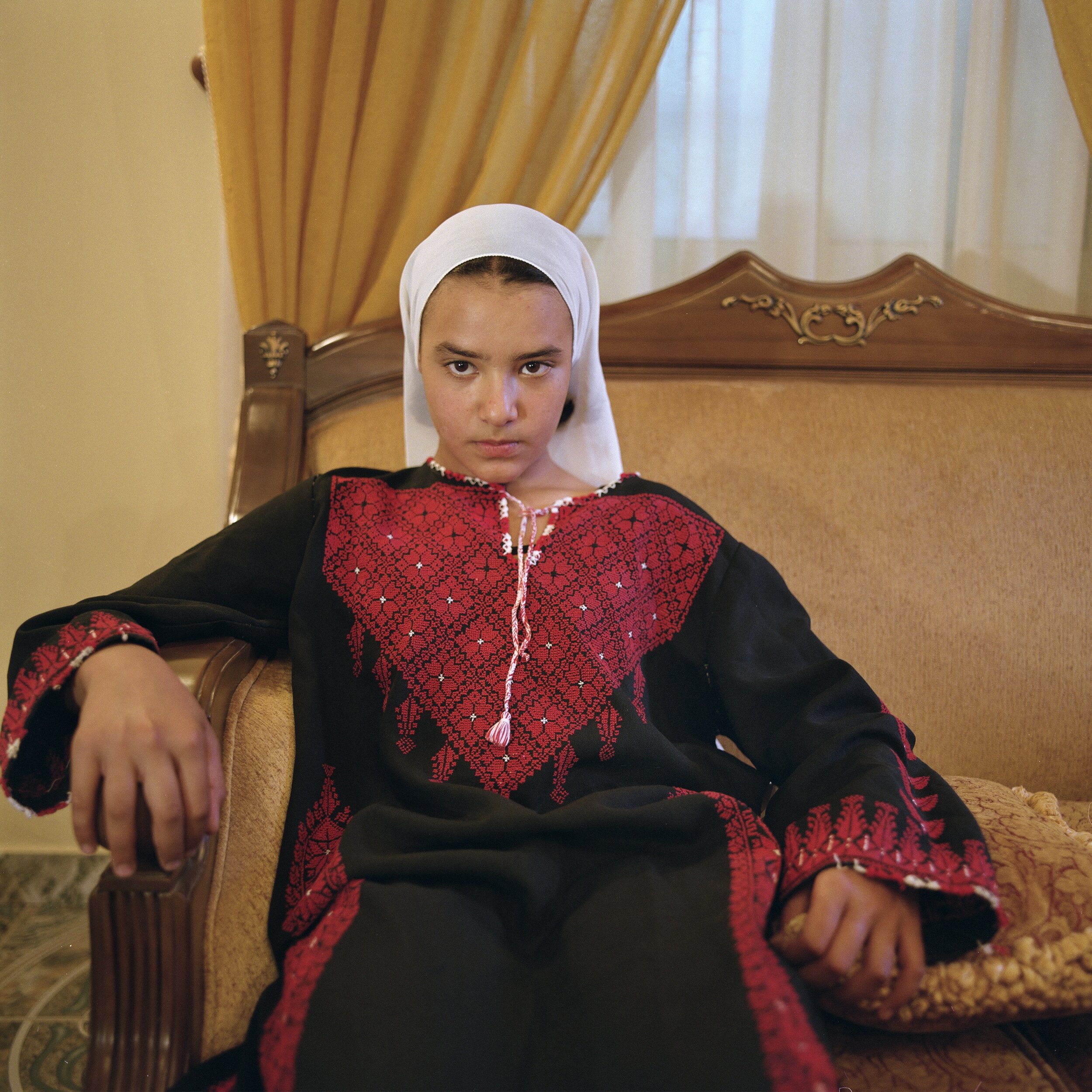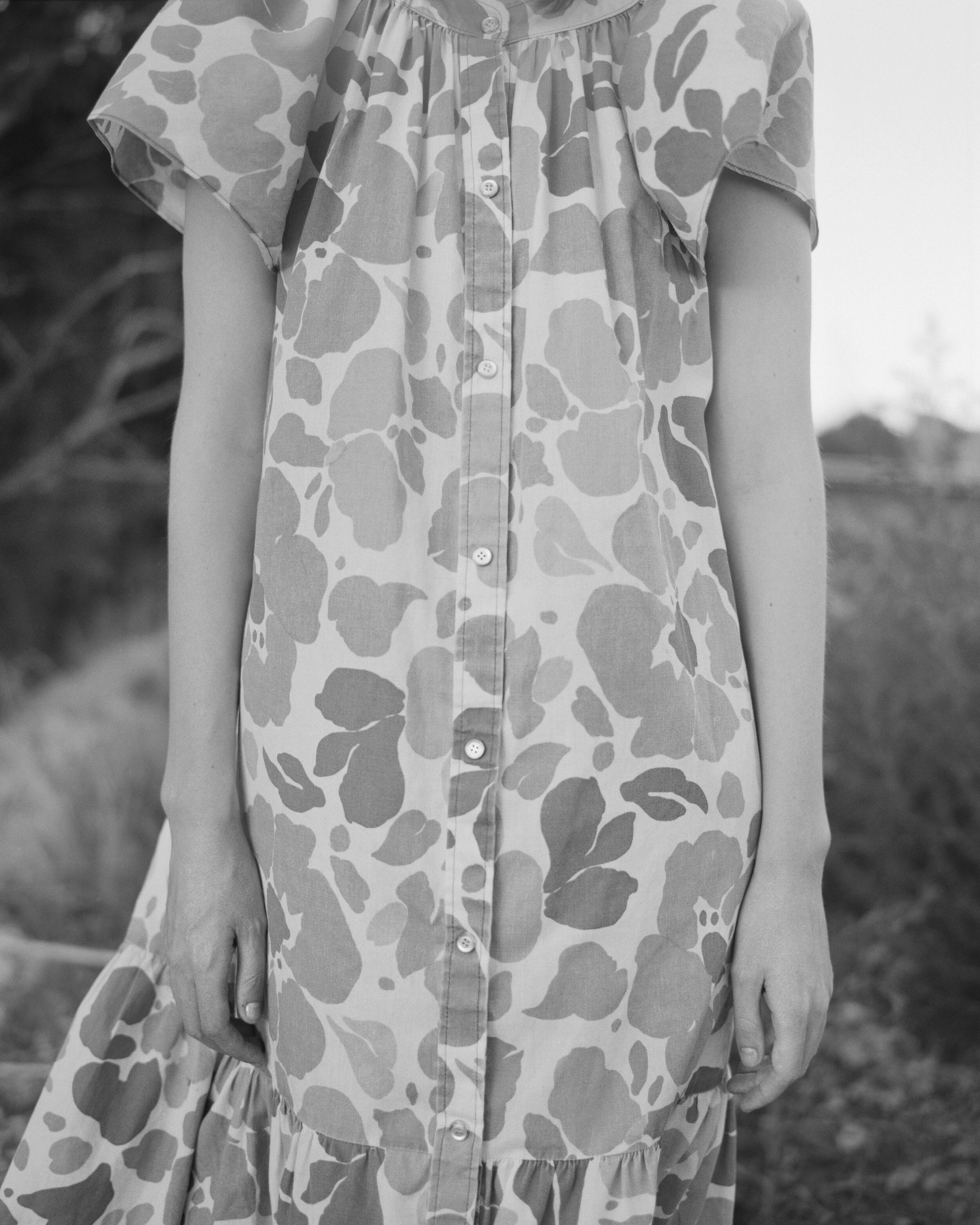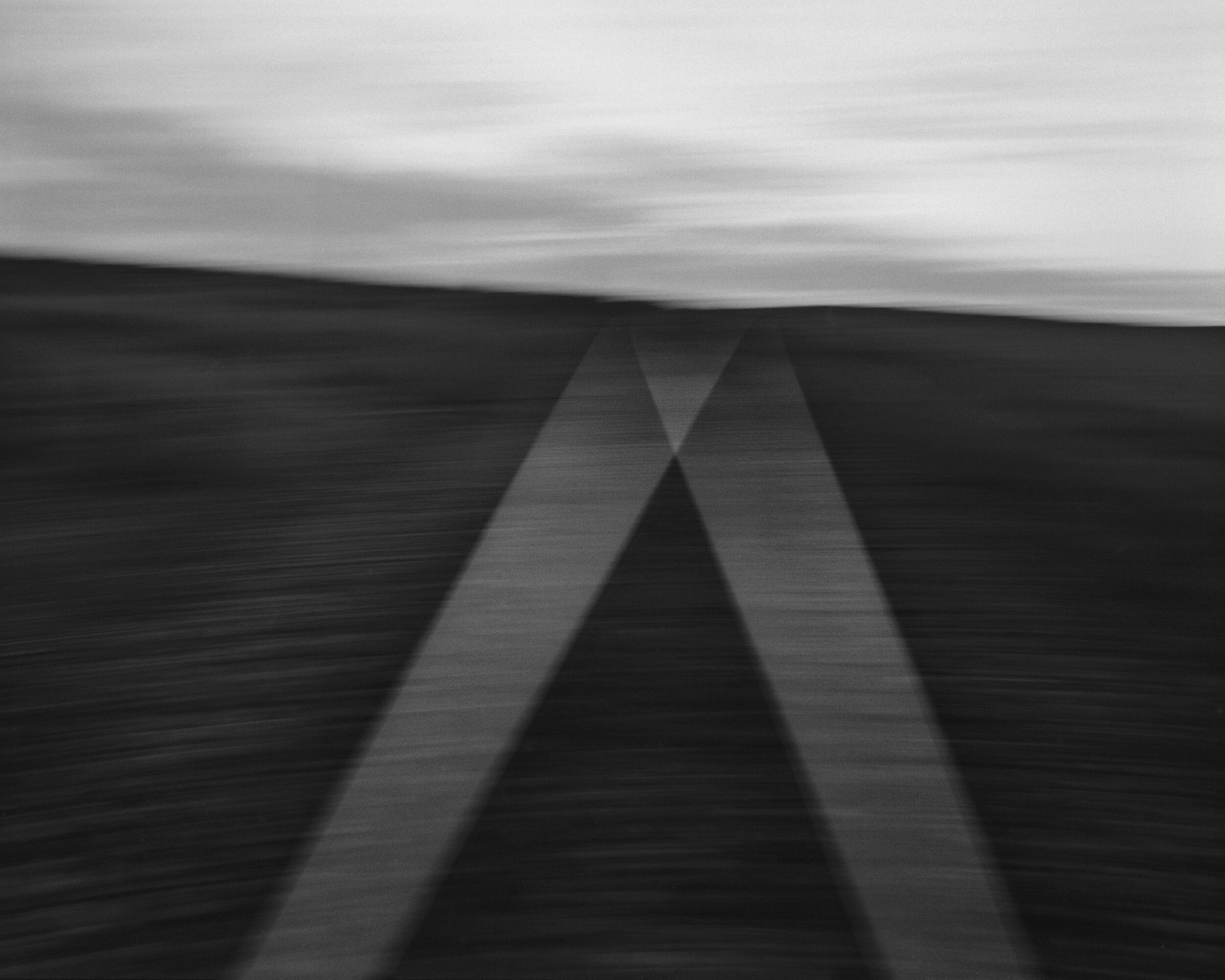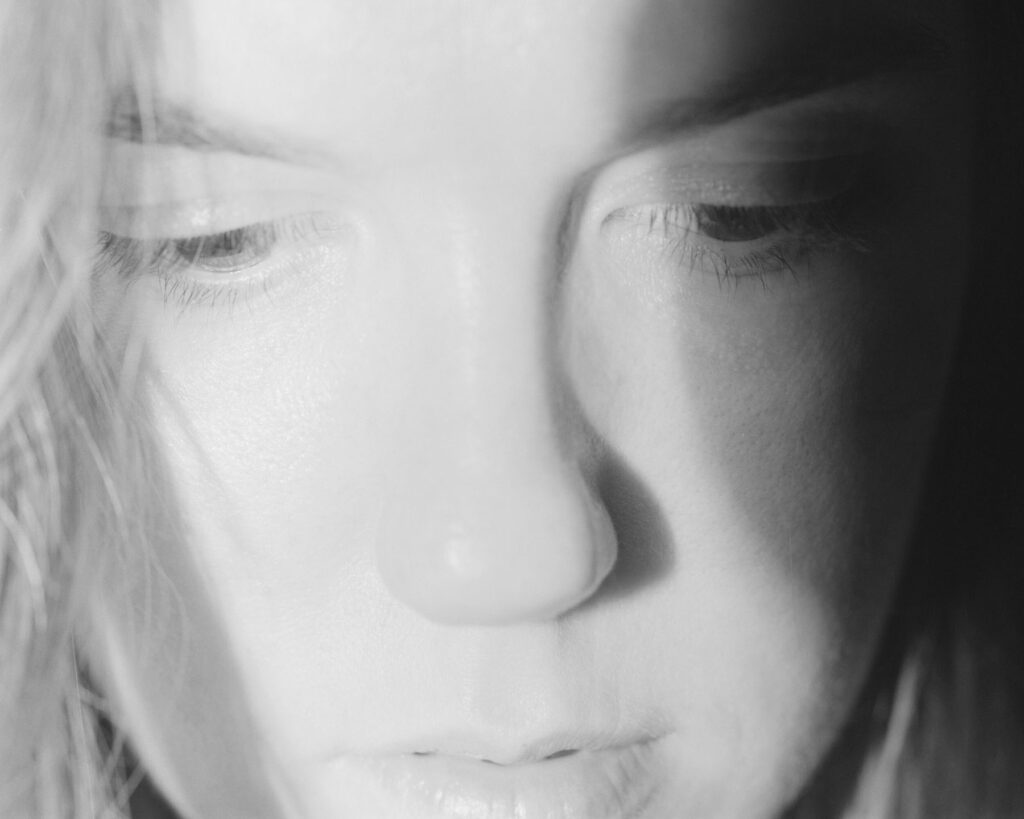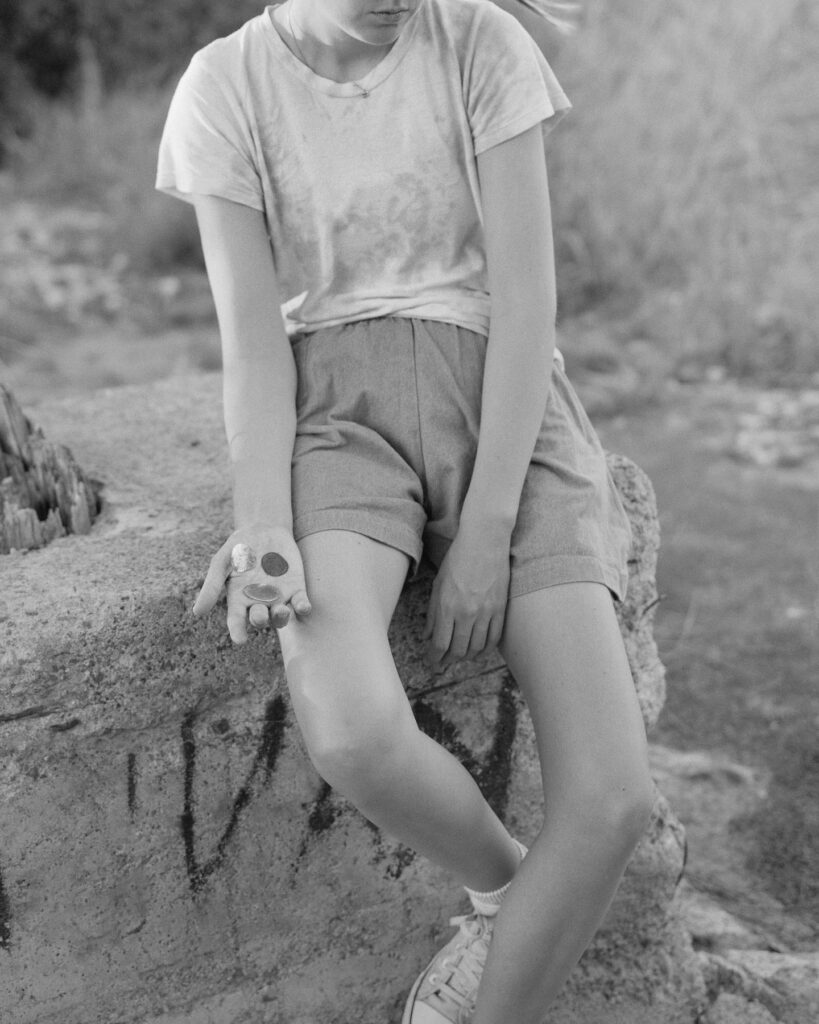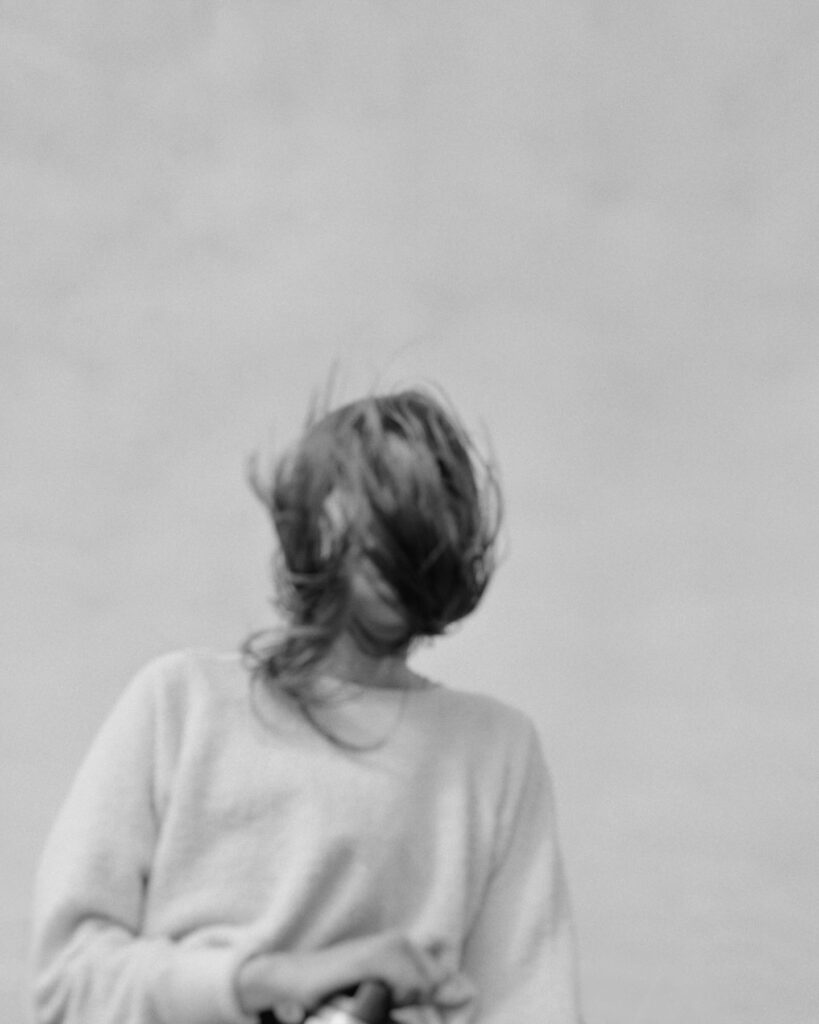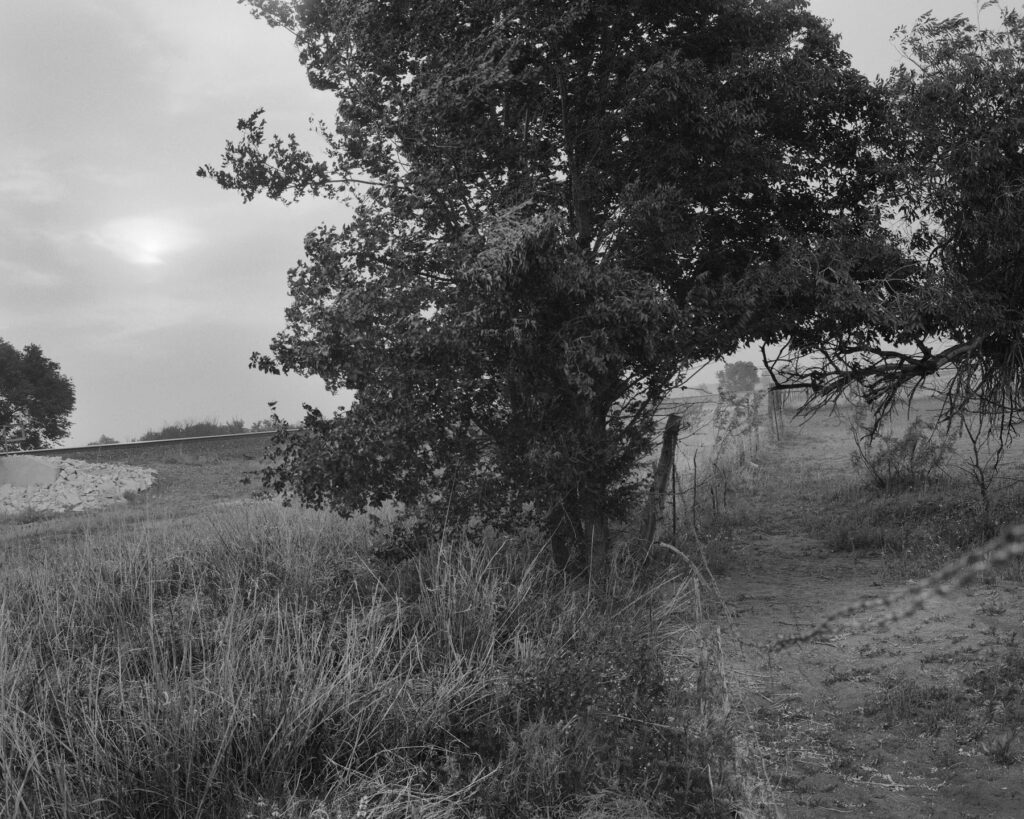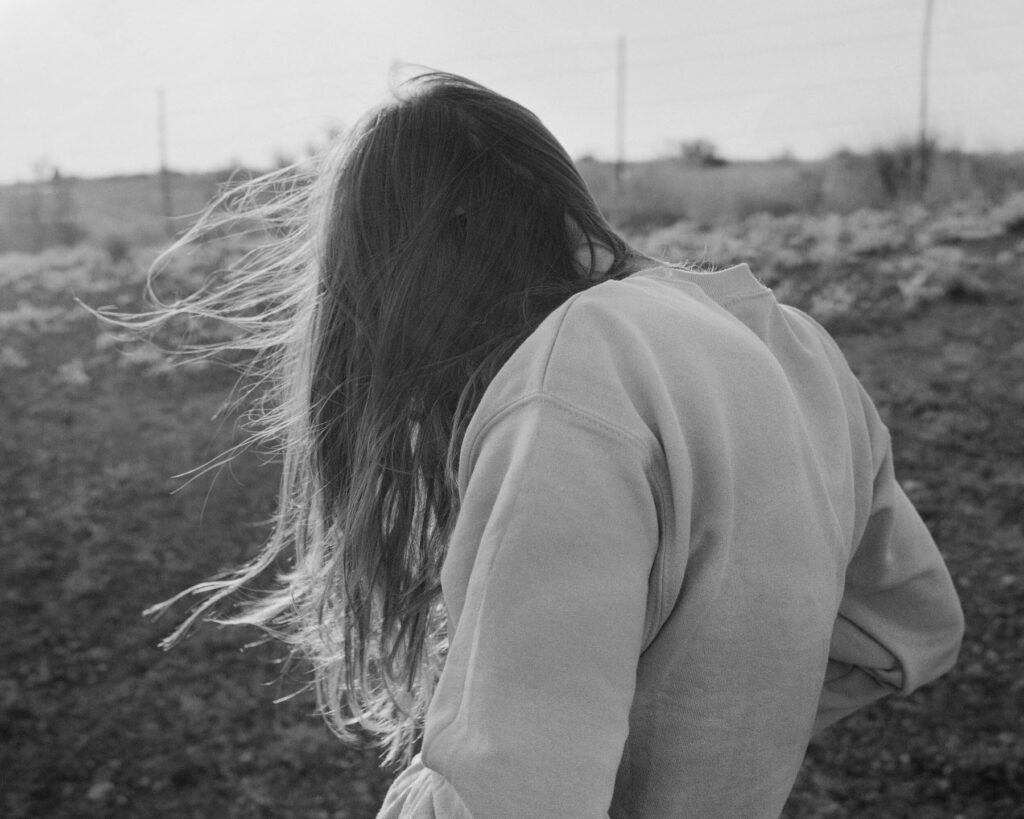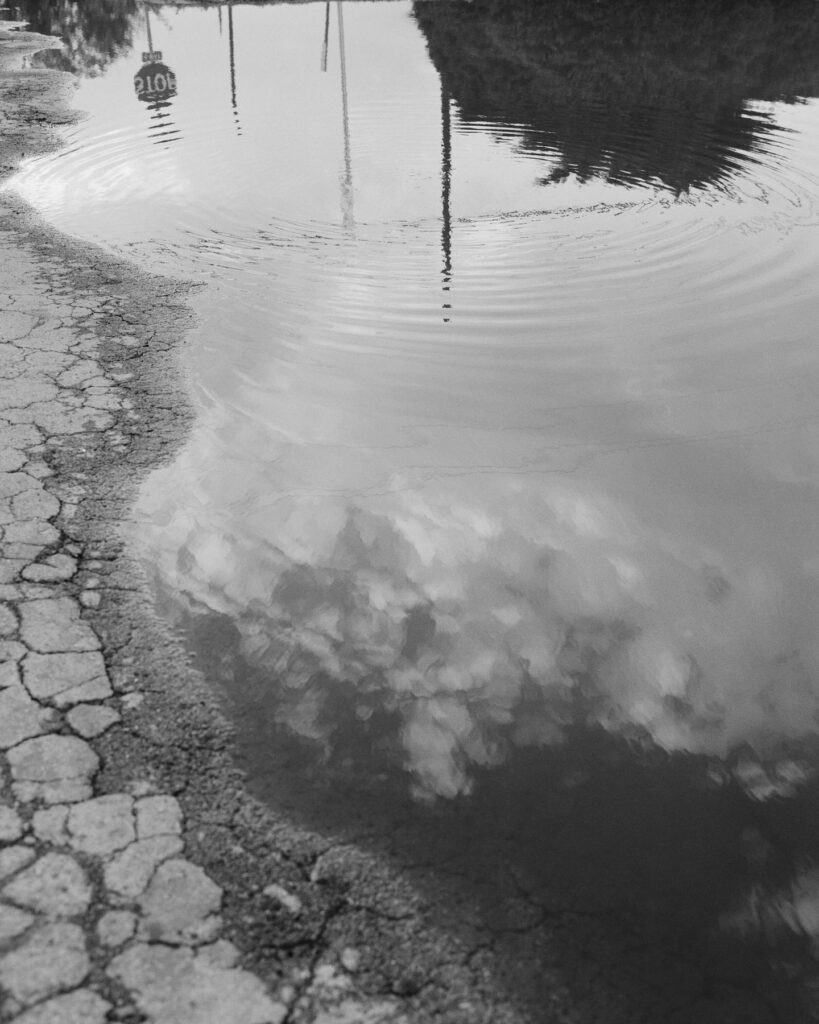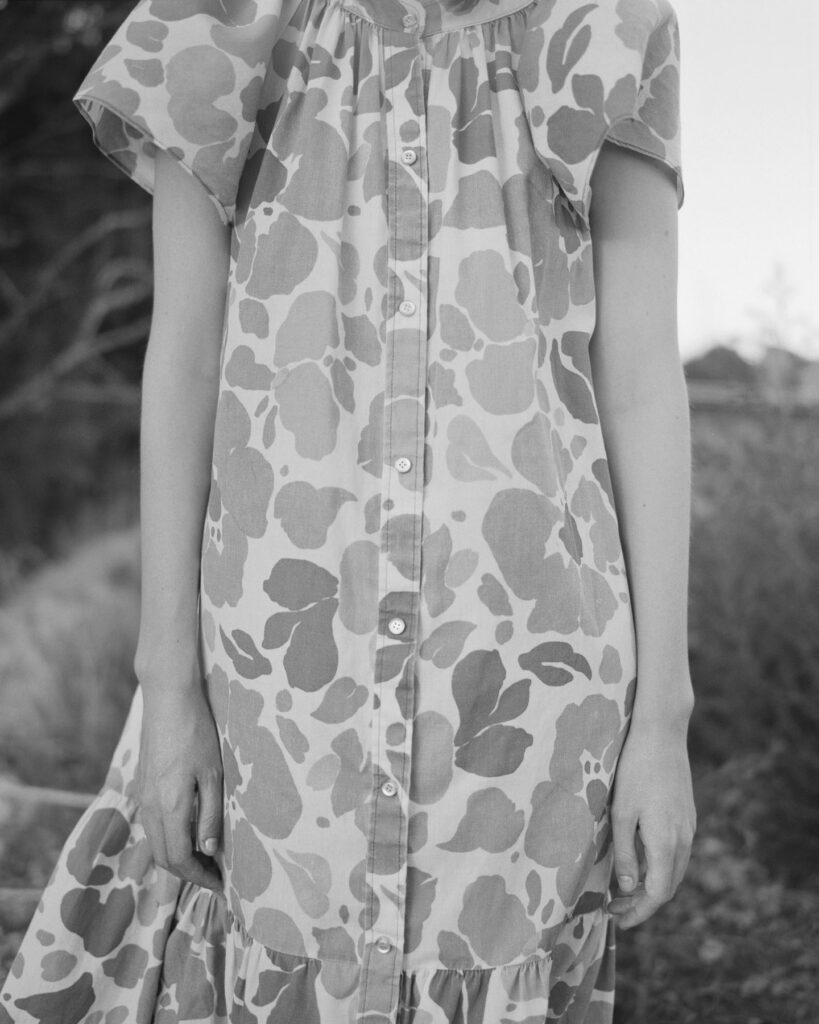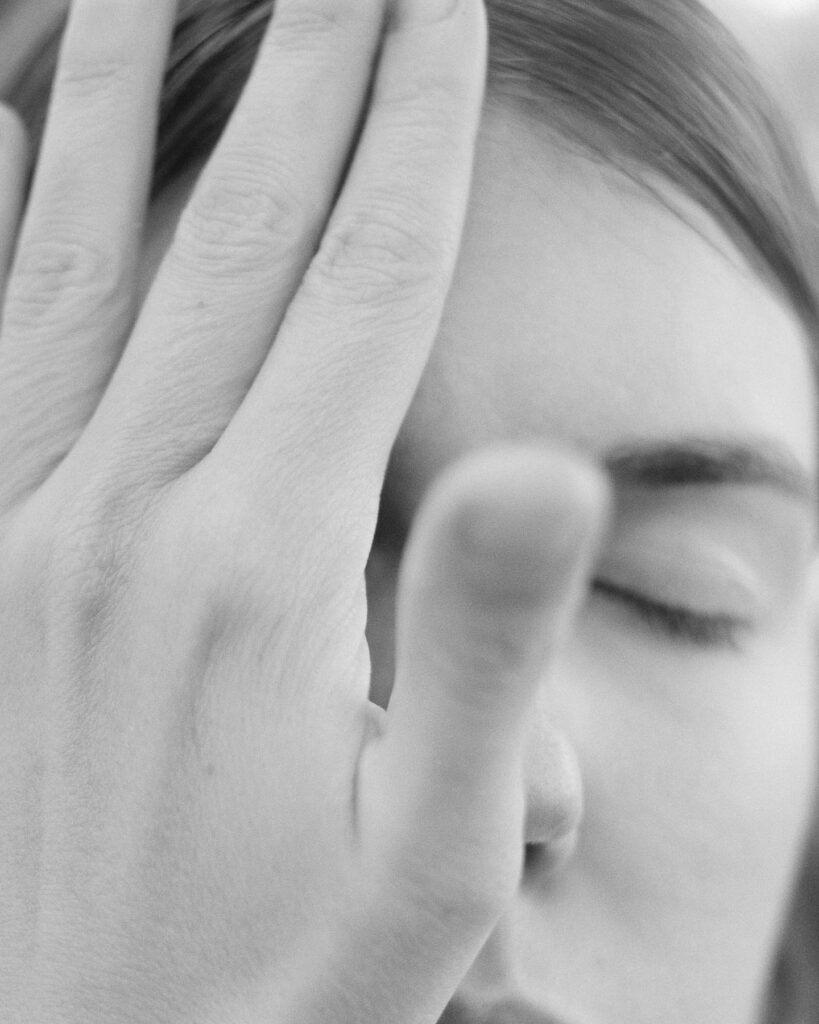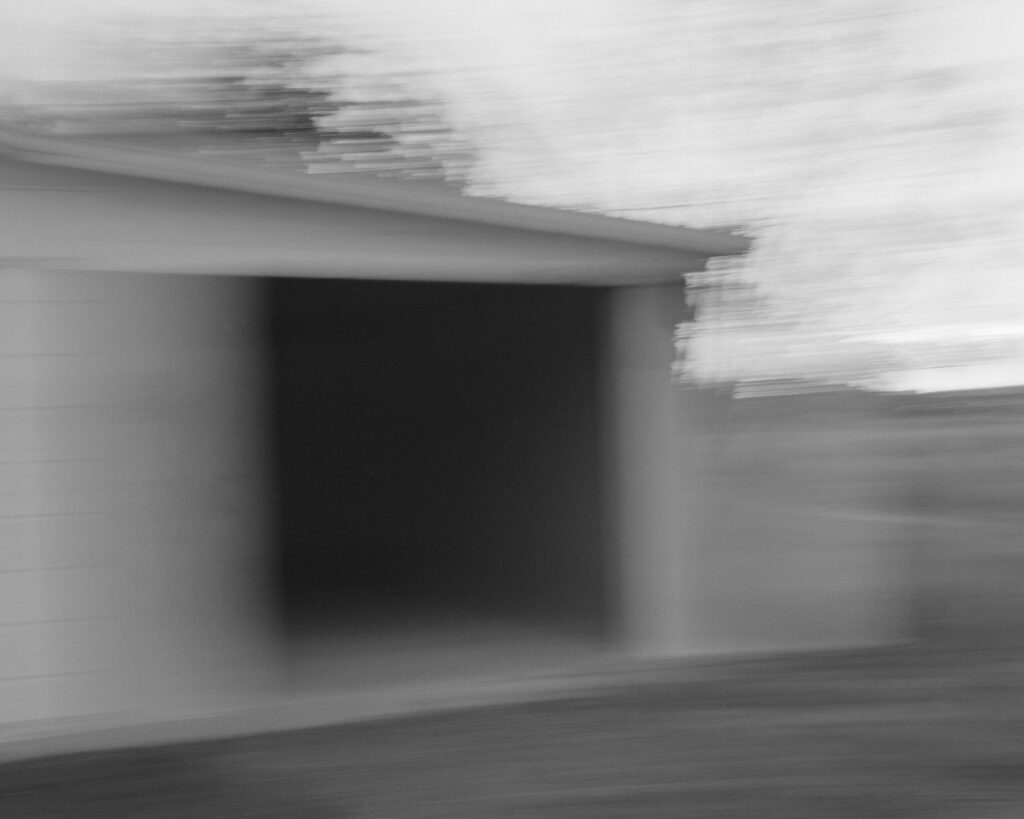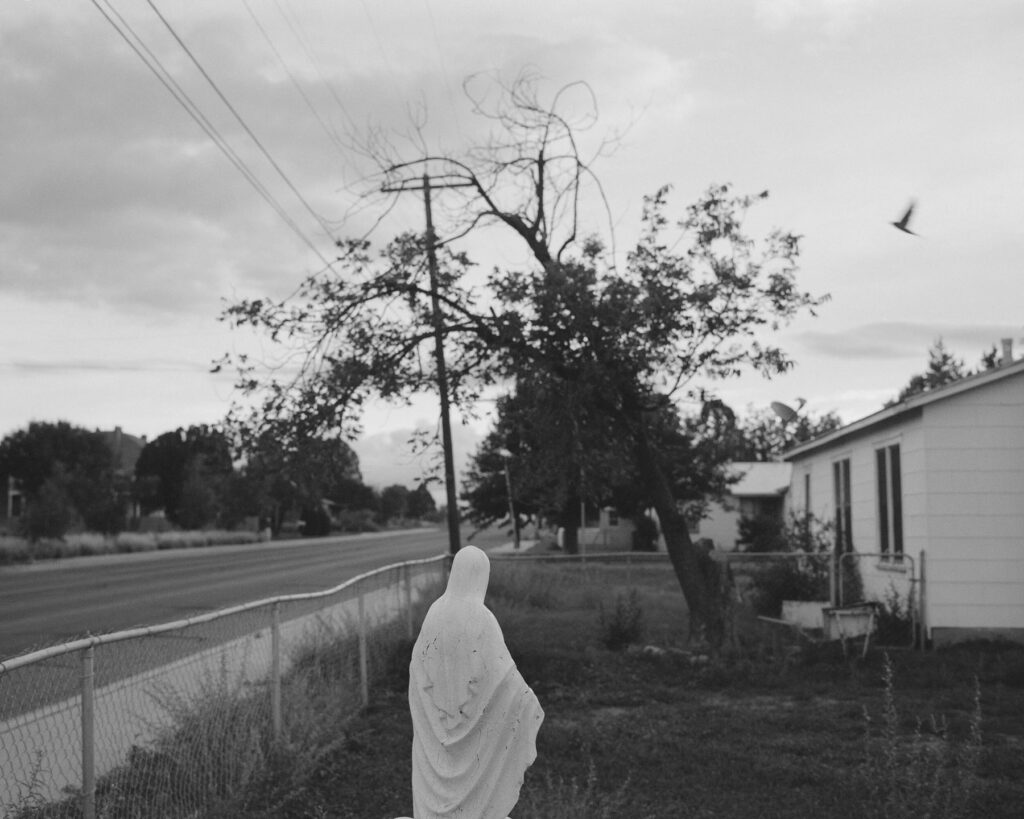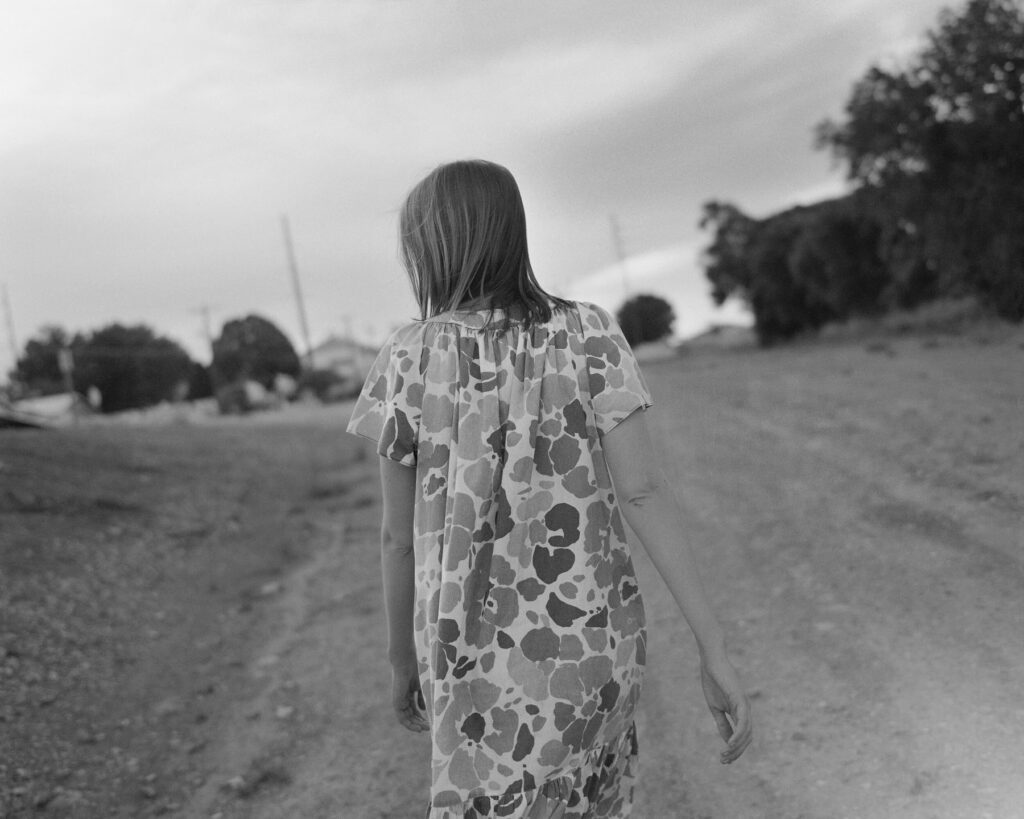I was looking at images from your work with the Charlotte Chesnais jewellery store in Paris from late last year; the acrylic sheets you use have these really organic shapes. I’d love to know a bit more about the kinds of materials you work with, and how you translate these into organic forms?
I have a liking for irregular forms like the Rorschach inkblots, the butterfly inkblot tests that are basically just ink on paper. But because of its form, you imagine things in it and for me, the irregular or organic forms of things have more possibility than a purely rectangular form. You can project more into it. That’s the way that we work because we have form that is not necessarily architectural. So, we can start to imagine how we’ll use something; how can we read the architecture? And for visitors, that happens [all over] again.
With the Charlotte Chesnais store, [the approach] came from a project before that, where we started casting materials directly in sand, using sand as a natural relief. So we cast another material in it and it takes the imprint of it in the material. We started doing that with gypsum, concrete and aluminium. For the store, we used acrylic but we didn’t cast it; we scanned a 3D relief of the sand. The irregular relief diffuses the light a lot more than it would a flat surface, which works more as a mirror.
[But] the irregular relief starts to diffuse the light so you cannot see through it anymore; the ceiling has this irregular form, and that diffuses light into the space and onto the display. Then we repeated the exact same thing with the display table, which works as a backdrop for the jewellery. So with the specific treatment of a material, we benefit from certain characteristics of it. By changing the relief, we have different characteristics that we can work with. So the material is the same, but the way it is formed and treated enhances, or brings forward, other properties. That is something I call material gesture; to work with the gestures that are intrinsically bound to a material, but also the gestures that, in the process of making things, are formed with the material.
And this is the same process you used for the Green Corner building in Bahrain?
Yes – in the Green Corner building, all the concrete (so, the façades, the walls, the floors) are cast on land next to the building. So we cast it directly in the sand; every time the sand has been worked on by the workmen on the site, and so every time we had different reliefs in the concrete. It was also very efficient, so in that sense it contributes to an idea of sustainability because most of the form work is just in the sand, in the ground that is already there. We didn’t have to transport building materials, just the concrete. I think up to 50% of the energy [to build] is used in making form work, and the other 50% to cast it. So, by shortcutting that first 50% of formwork, we reduced the energy consumption used to make a building. But that’s not the only driving force.
The driving force is that we can building something that feels very local, and very [site specific]. The site itself produces the building, and leaves its mark on the building. With the façade, each one is a fragment of the landscape, but also a moment in time. One was done in March 2019, another in April. So you have this time recording in it as well. The building isn’t static; it becomes a time document and a process. With the Green Corner building, we also have aluminium doors and windows that are also sand casted, but we did that in a foundry. But with aluminium you can’t cast solids so, with the doors, the front side is an imprint of the sand and the back side is hollow.
